Special Report
The Most Beautiful Natural Wonder in Every State
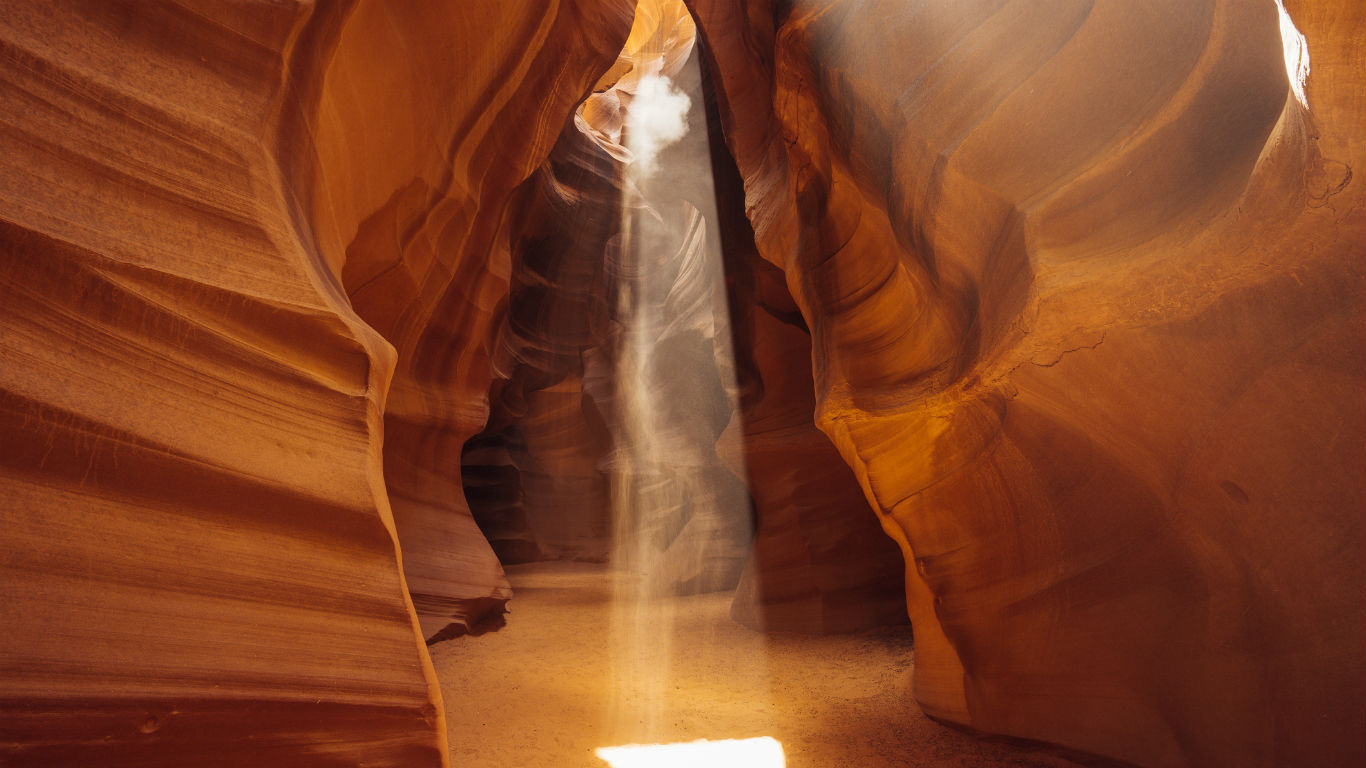
Published:
Last Updated:

While humans have built some impressive, gravity-defying, and awe-inspiring marvels — here are the most photographed structures in the world — the natural world may have us beat. We’re no match for the power of glaciers carving valleys out of mountains, rivers eroding canyons for millions of years, or volcanoes creating new islands overnight.
24/7 Tempo created a list of the most beautiful natural wonder in every state after reviewing dozens of travel guides, encyclopedia articles, and photography collections. While there is no definitive way to choose the best natural wonder, we’re confident that each of these places deserves a mention.
These wonders are by no means each state’s most popular natural attraction, as the sheer scope and variety of the geological formations in places like Utah and Arizona cannot be overlooked in favor of one shining star.
From ephemeral blue caverns hidden inside glaciers to the eerie cypress swamps of the east coast, this country is packed with mind-boggling sites. You’re going to see some amazing sights, especially if you take the back roads — these are the 15 absolute best road trips you can take in the summer.
Click here to see the most beautiful natural wonder in every state.

Alabama: Neversink Pit
Lined with ferns and waterfalls, this sinkhole outside of Fackler is 40 feet wide at the top rim and drops 162 feet. The pit is open to climbers and repellers by permit, and all visitors are asked to obey Southeastern Cave Conservancy guidelines, as Neversink Pit is home to a fragile ecosystem of bats and various endangered plants.
[in-text-ad]
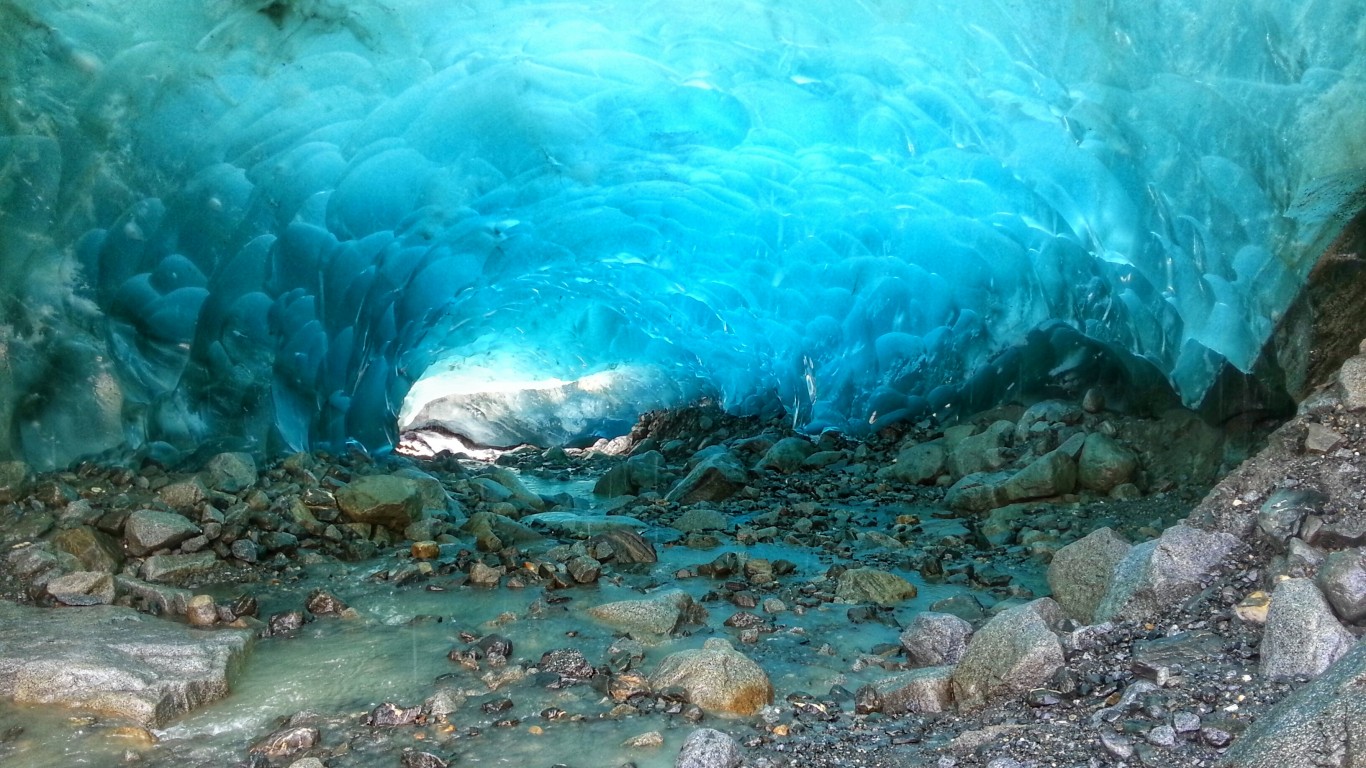
Alaska: Mendenhall Ice Caves
Inside the 12-mile-long Mendenhall glacier is a network of ever-changing ice caves created by the melting of the glacier. Visitors can only access the caves by first kayaking to the glacier, then climbing over it to reach the opening.
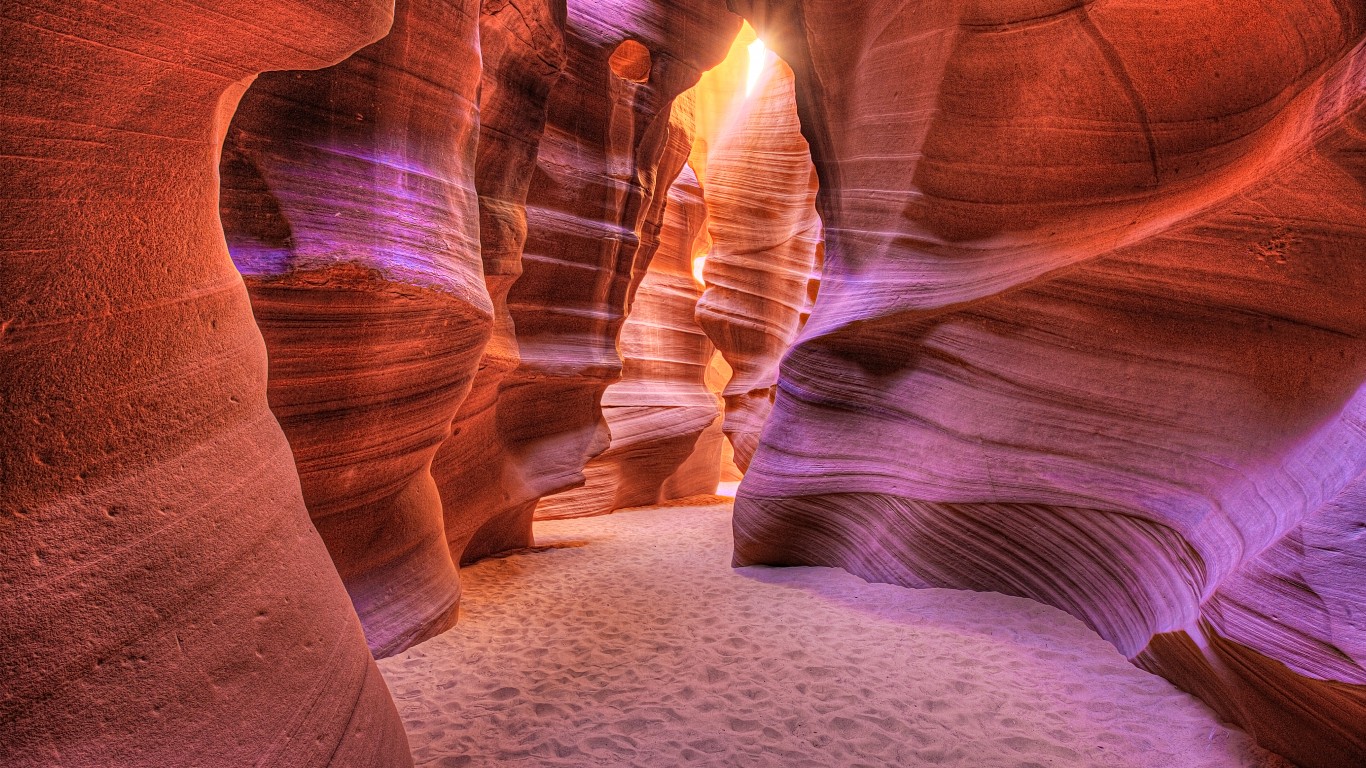
Arizona: Antelope Canyon
This sandstone slot canyon located within the Navajo Nation in Page, Arizona is only accessible by guided tour due to the risk of flash floods. The striated canyon walls were formed by millions of years of erosion and appear to be flowing like water.

Arkansas: Buffalo River
The Buffalo River was the first in the United States to be designated a National River. Deep within the Ozark National Forest, the scenic river flows alongside a series of bluffs, and ranges from rapids to calm pools.
[in-text-ad-2]
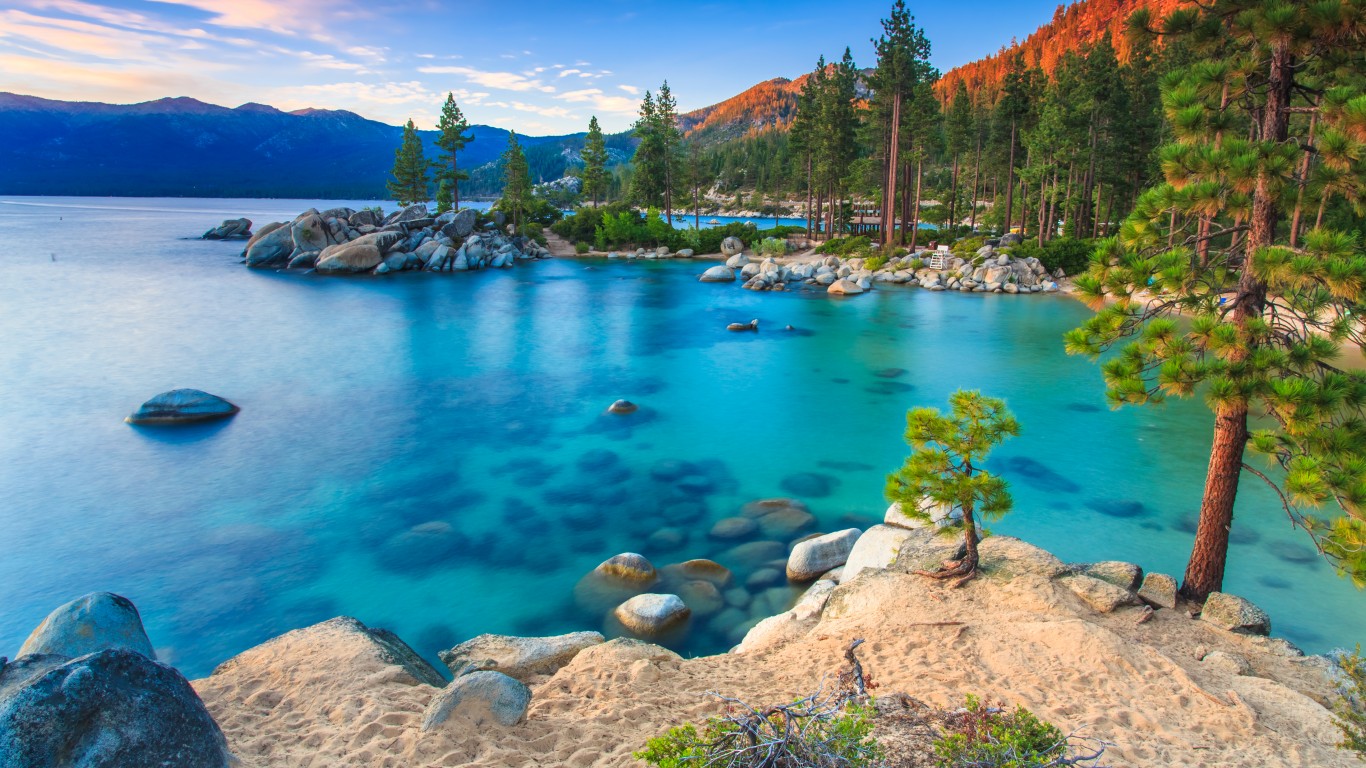
California: Lake Tahoe
The largest alpine lake in the United States, Lake Tahoe covers 191 square miles on the border of California and Nevada. It sits over 6,000 feet above sea level, surrounded by mountains. The waters are famous for appearing different shades of blue, turquoise, indigo, and purple depending on the location and weather.
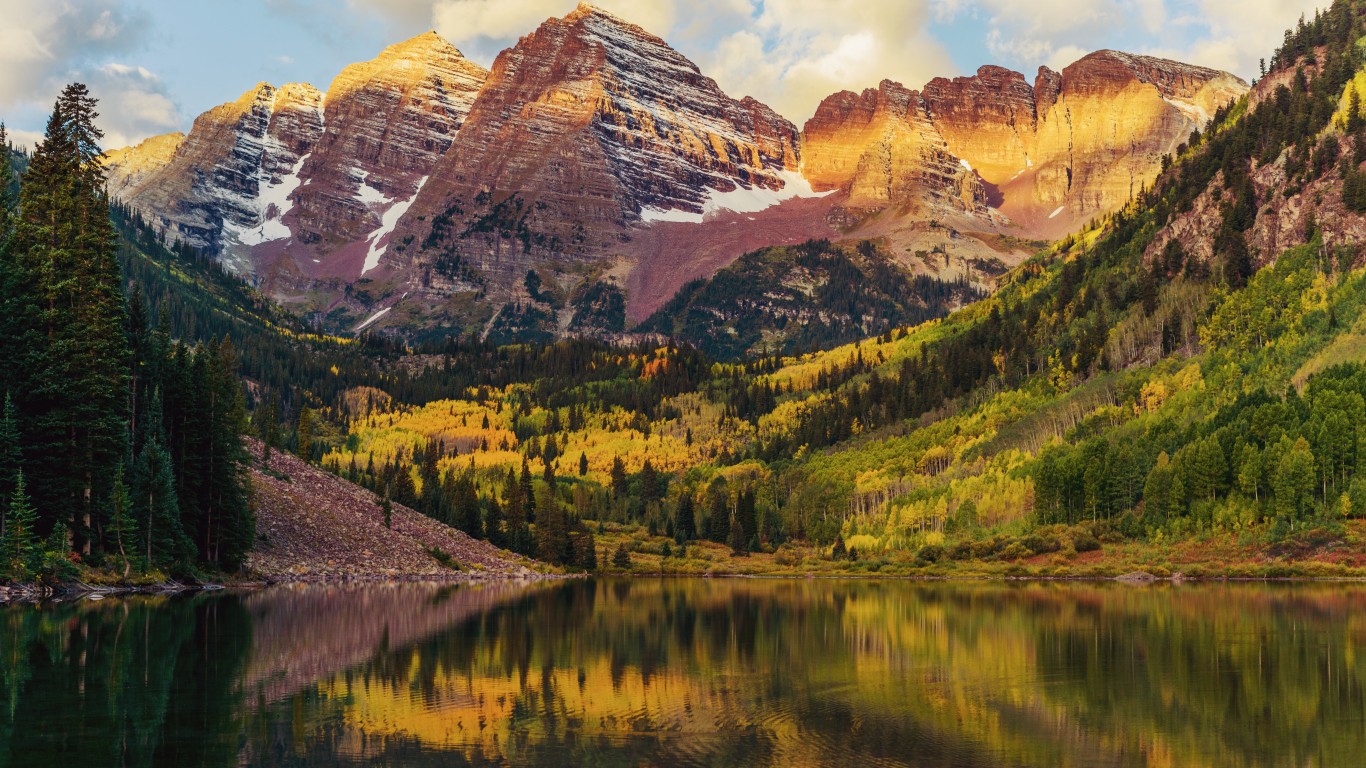
Colorado: Maroon Bells
North and South Maroon Peaks tower over Maroon Lake in Aspen, reflecting their red hue off the water on sunny days. The Bells, along with their neighbor Pyramid Peak, are made of red mudstone and are known as the most photographed mountains in the Rockies.
[in-text-ad]
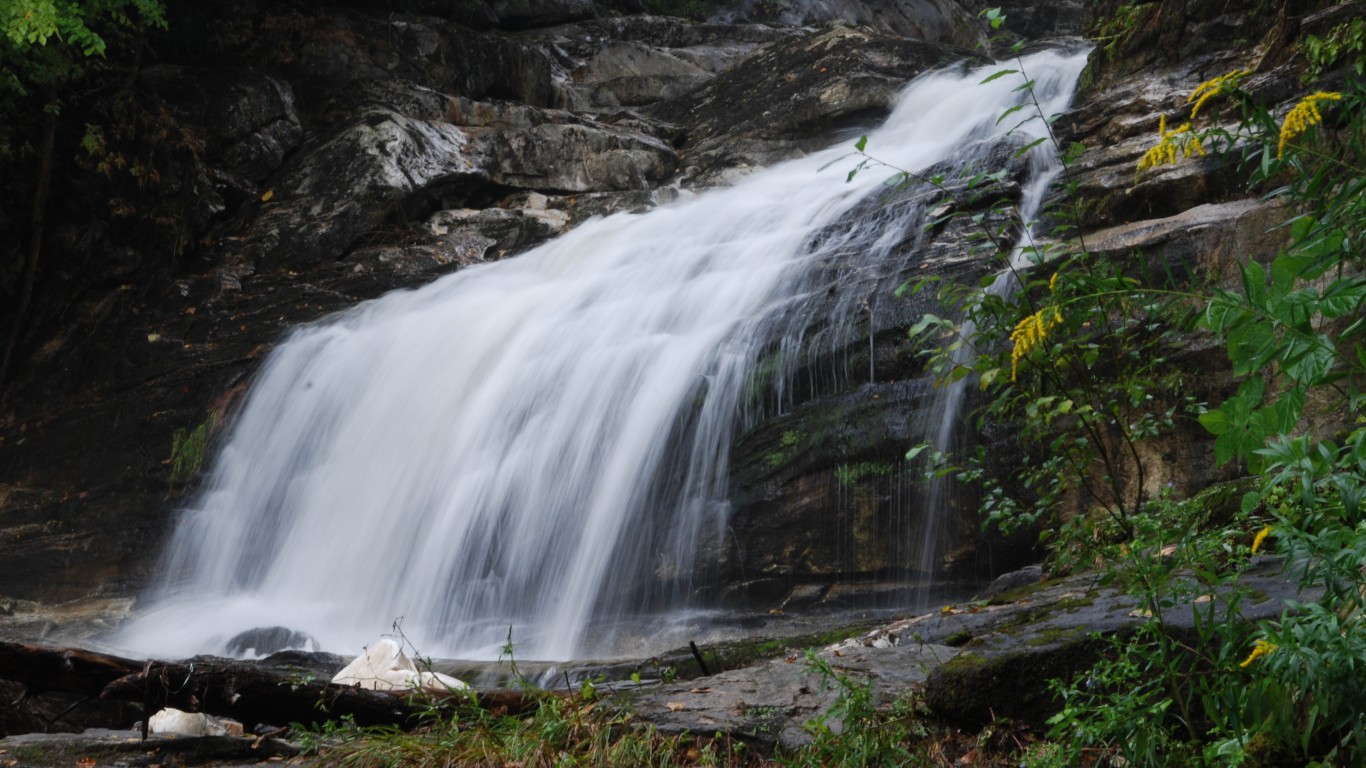
Connecticut: Kent Falls
A series of falls that spans a quarter mile and drops 250 feet total, Kent Falls are one of Connecticut’s most popular natural attractions. They are located in Kent Falls State Park, which offers picnic tables, a paved path to the upper falls, and a handicap accessible viewing area at the lower falls.

Delaware: Great Cypress Swamp
The Great Cypress Swamp covers 50 square miles at the headwaters of the Pocomoke River and consists of seasonally flooded forests made up of bald cypress, white cedar, pines, and various hardwoods. It’s the northernmost bald cypress grove in the country and an important habitat for several at-risk bird species.

Florida: Juniper Springs
Juniper Springs is a series of clear, bubbling freshwater springs found in the sub-tropical Ocala National Forest north of Orlando. Contained in a recreation area that allows swimming and snorkeling, the springs are surrounded by palm and oak trees and are home to alligators, river otters, and eels.
[in-text-ad-2]
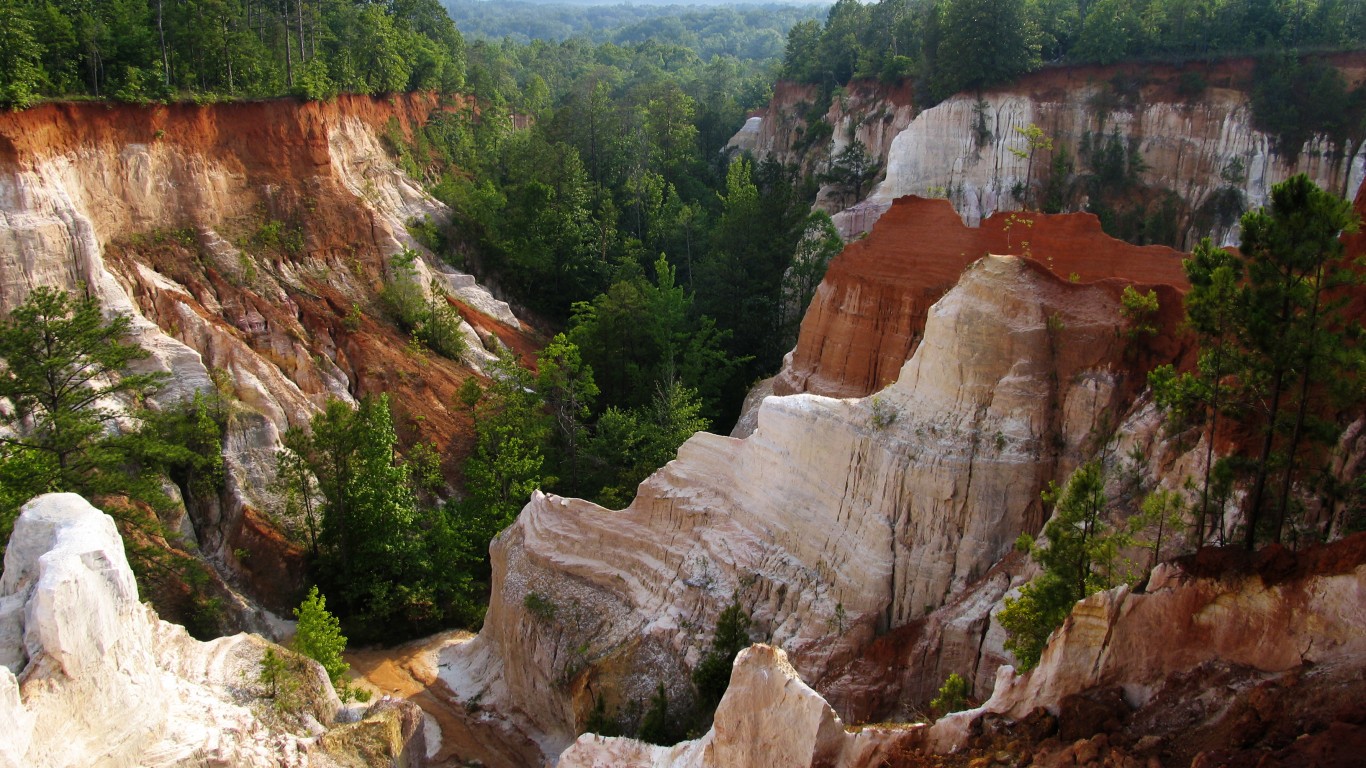
Georgia: Providence Canyon
Millions of years worth of colorful strata and geological records are on display in Georgia’s Providence Canyon, which only began forming in the early 1800s as a result of poor farming practices. Rain and irrigation runoff eroded these deep chasms after native forests were cleared for farmland.
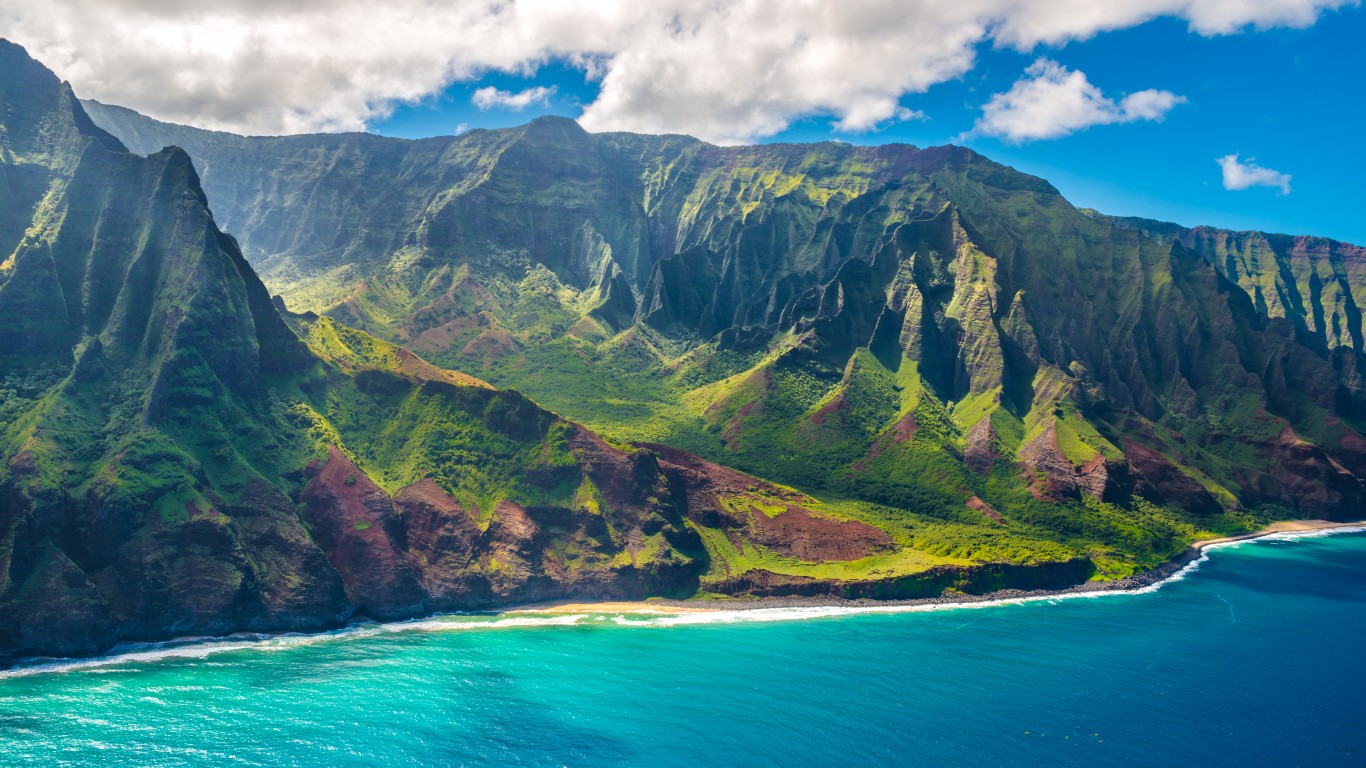
Hawaii: Na Pali Coast
Once home to ancient Hawaiian communities, the Na Pali coast is characterized by sharp peaks and mountains that fall steeply to the ocean, forming deep valleys, caves, and cliffs. The only ways to see the coast are by helicopter, boat, or hiking a gruelling 11-mile trail over the steep ridges.
[in-text-ad]
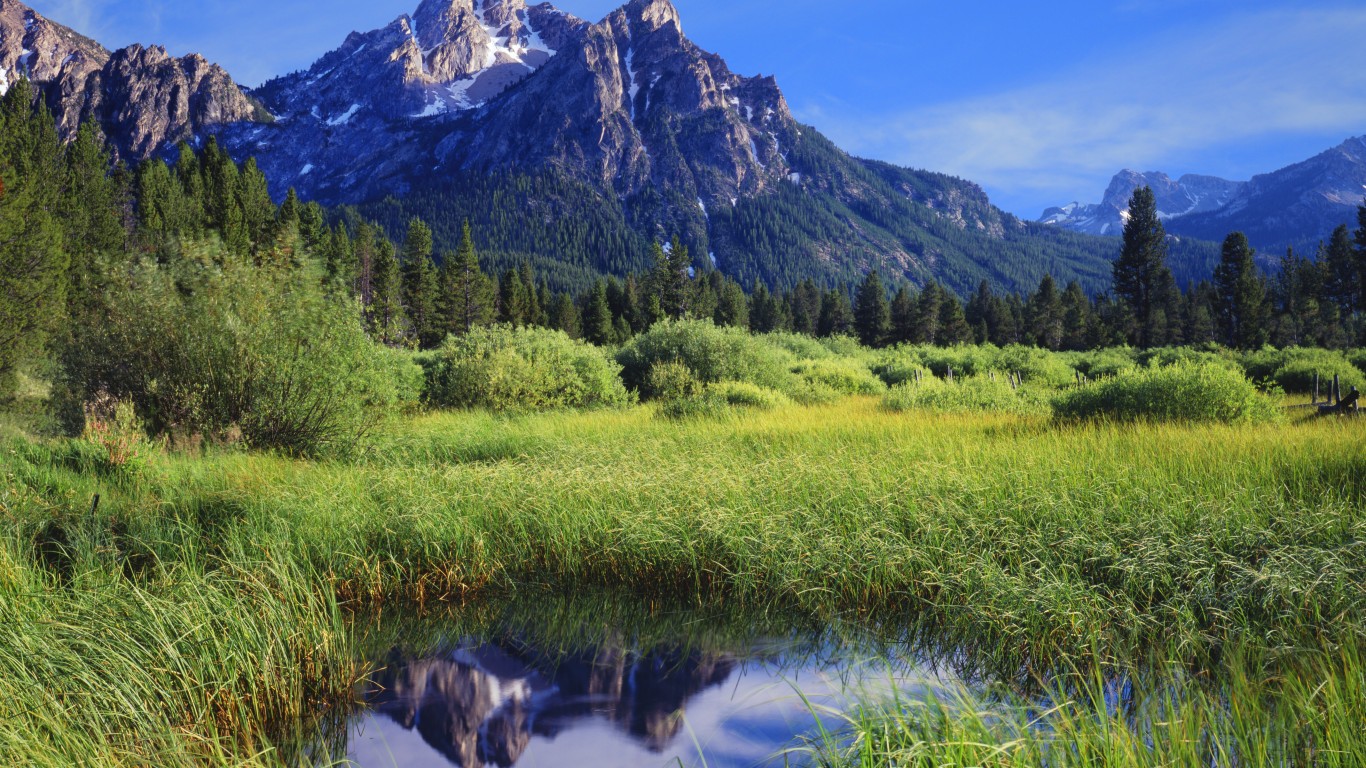
Idaho: Sawtooth National Forest
The Sawtooth National Forest is home to over 300 alpine lakes amongst dozens of 10,000 foot snow-capped peaks, and over 700 miles of trails. While Sawtooth is a haven for all types of outdoor sports and activities, those who wish to see it firsthand from the comfort of a vehicle can drive the Ponderosa Pine Scenic Byway.
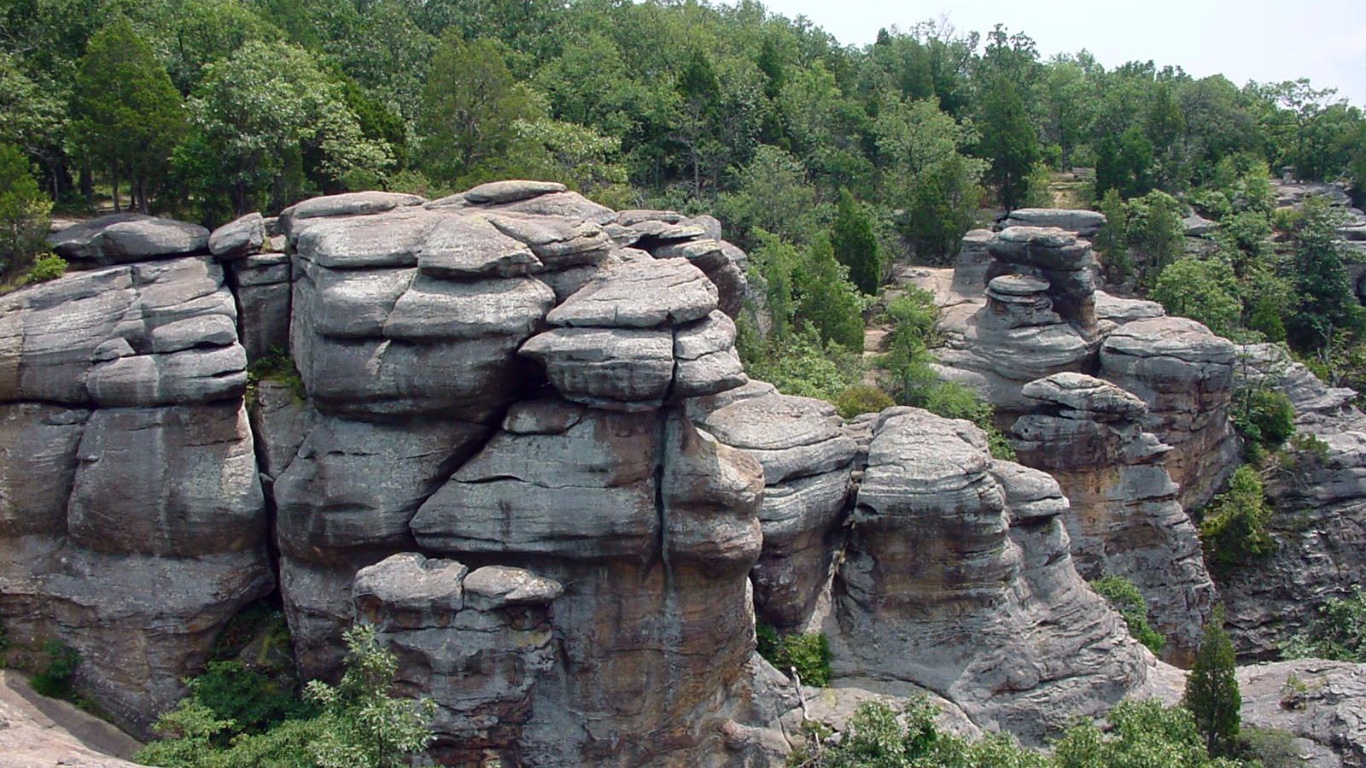
Illinois: Garden of the Gods
These 300-million-year-old sandstone formations in the Shawnee National Forest are accessible by a quarter-mile observation trail and are one of the most photographed locations in Illinois.
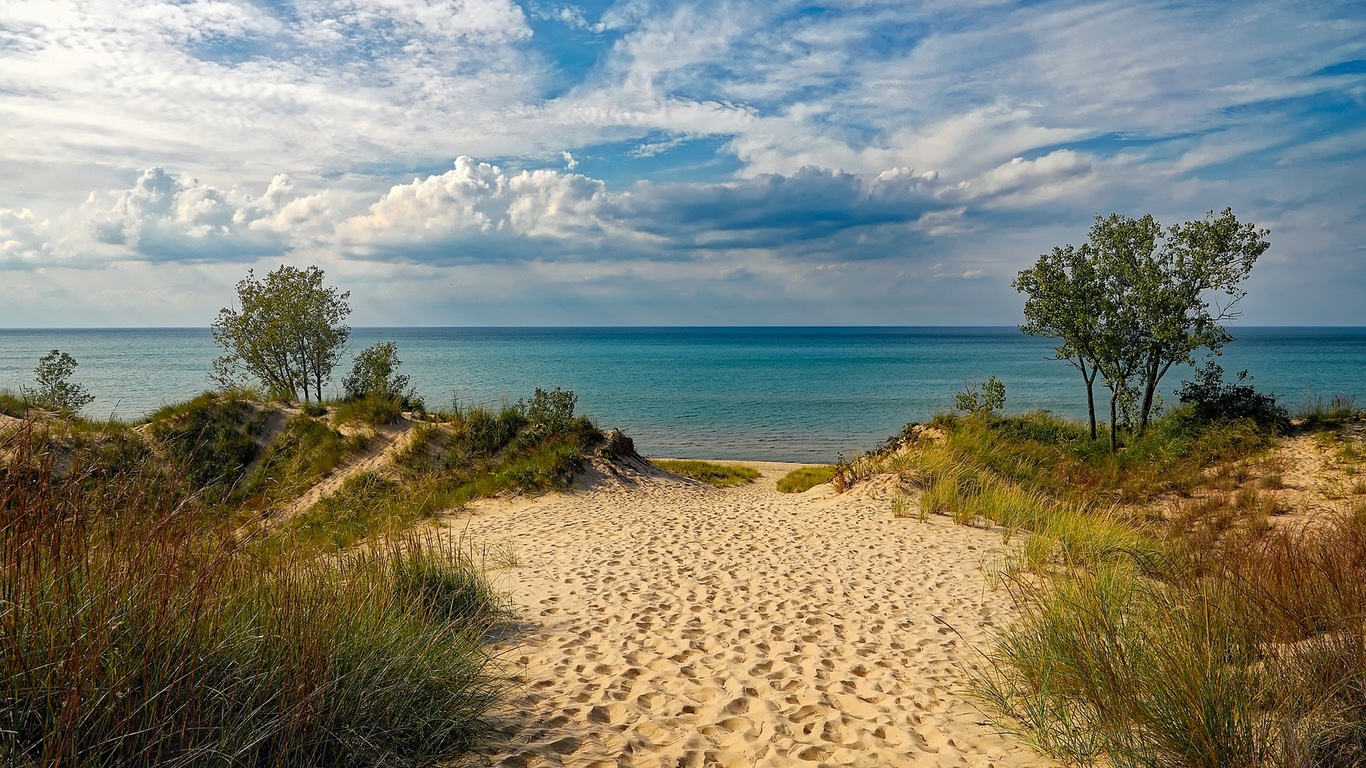
Indiana: Indiana Dunes
Spanning 15 miles of coastline on the southern shore of Lake Michigan, Indian Dunes National Park has over 50 miles of dune trials, as well as beaches, wetlands, rivers, forests, and prairies.
[in-text-ad-2]
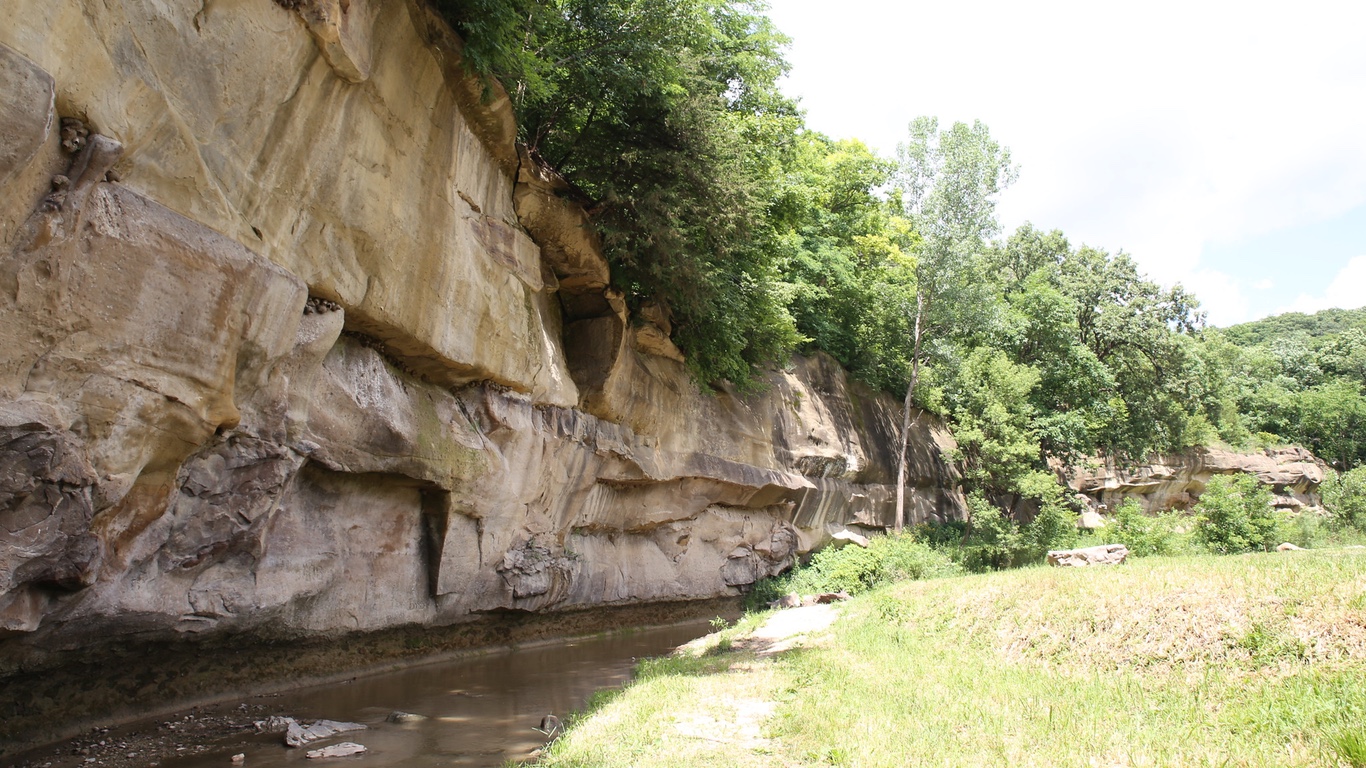
Iowa: Upper Iowa River
The Upper Iowa River traverses part of what is known as the Driftless Area, a region untouched by glaciers during the last ice age, which has left the land with intact ancient topography. High bluffs surround this stretch of water, which is a popular area for kayaking and canoeing.
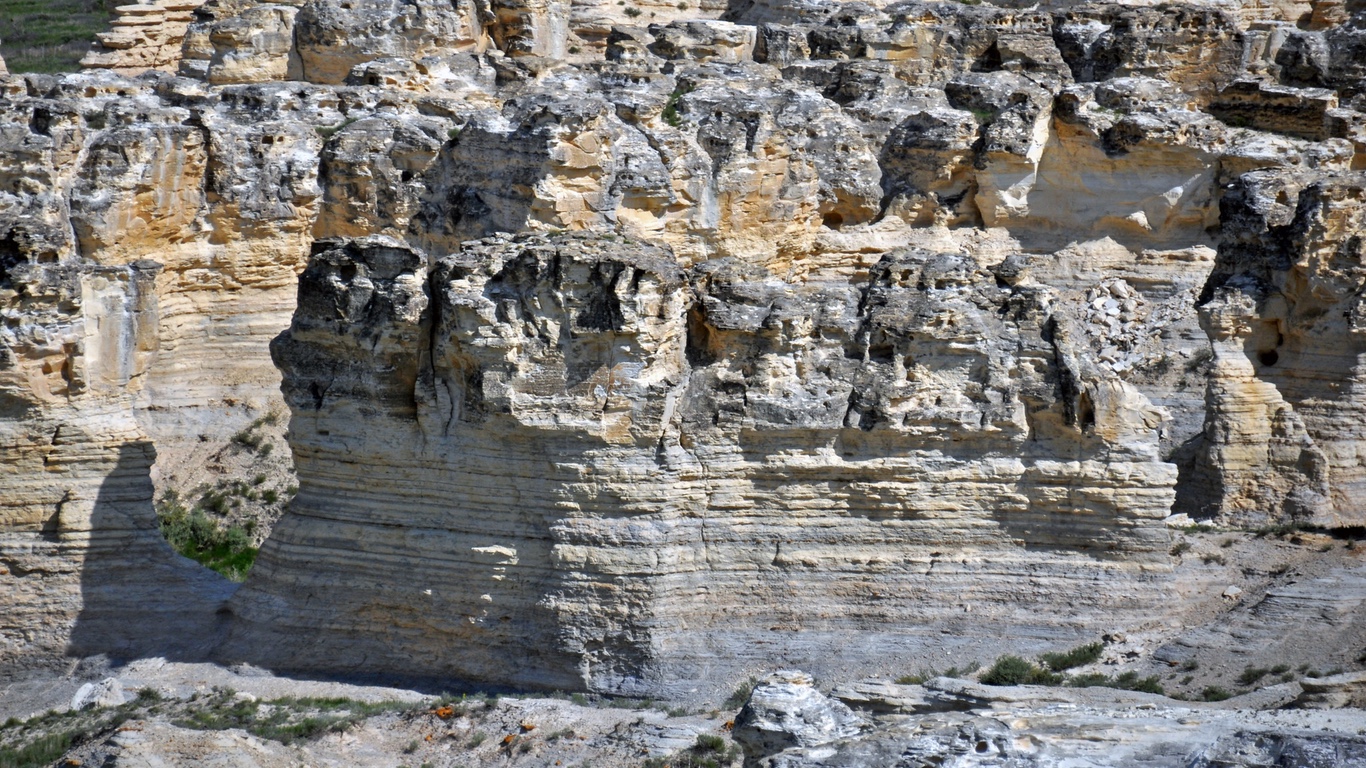
Kansas: Little Jerusalem
Formerly on private property, Little Jerusalem is the largest chalk formation in Kansas, and is currently being prepared for public viewing. The 100-foot-tall chalk spires and cliffs are left over from an ancient inland sea that once covered the area.
[in-text-ad]
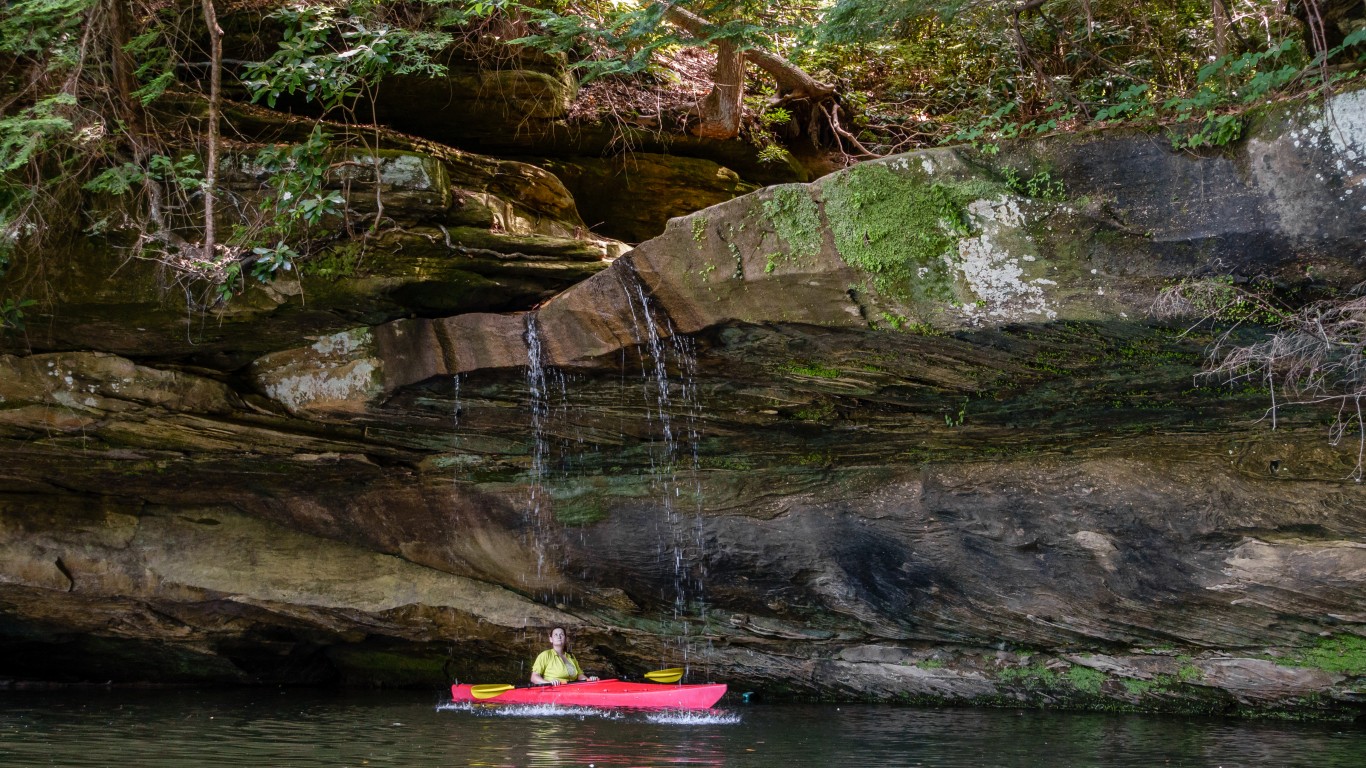
Kentucky: Grayson Lake
Grayson Lake in Olive Hill is surrounded by sandstone bluffs covered in dense forest. Part of a 1,500 acre state park, the lake is open to canoeing and kayaking, and is particularly beautiful after rain, when waterfalls appear along the rock formations, some of which can only be viewed by boat.
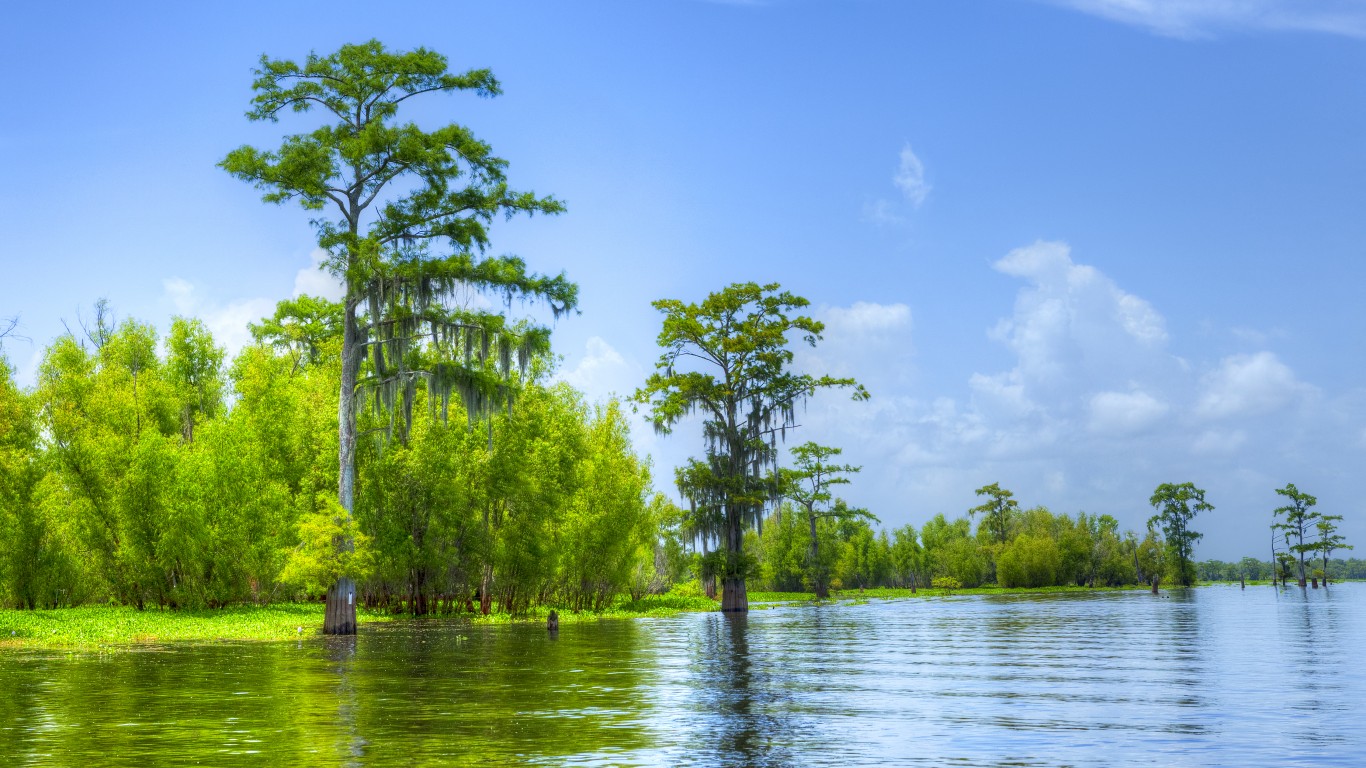
Louisiana: Atchafalaya Basin
The largest swamp in the United States, the Atchafalaya River Basin covers nearly a million acres. Composed of marshes, iconic moss-draped cypress groves, lakes, and bottomland hardwood forest, the area is a crucial wildlife habitat and home to the largest population of nesting bald eagles in the region.
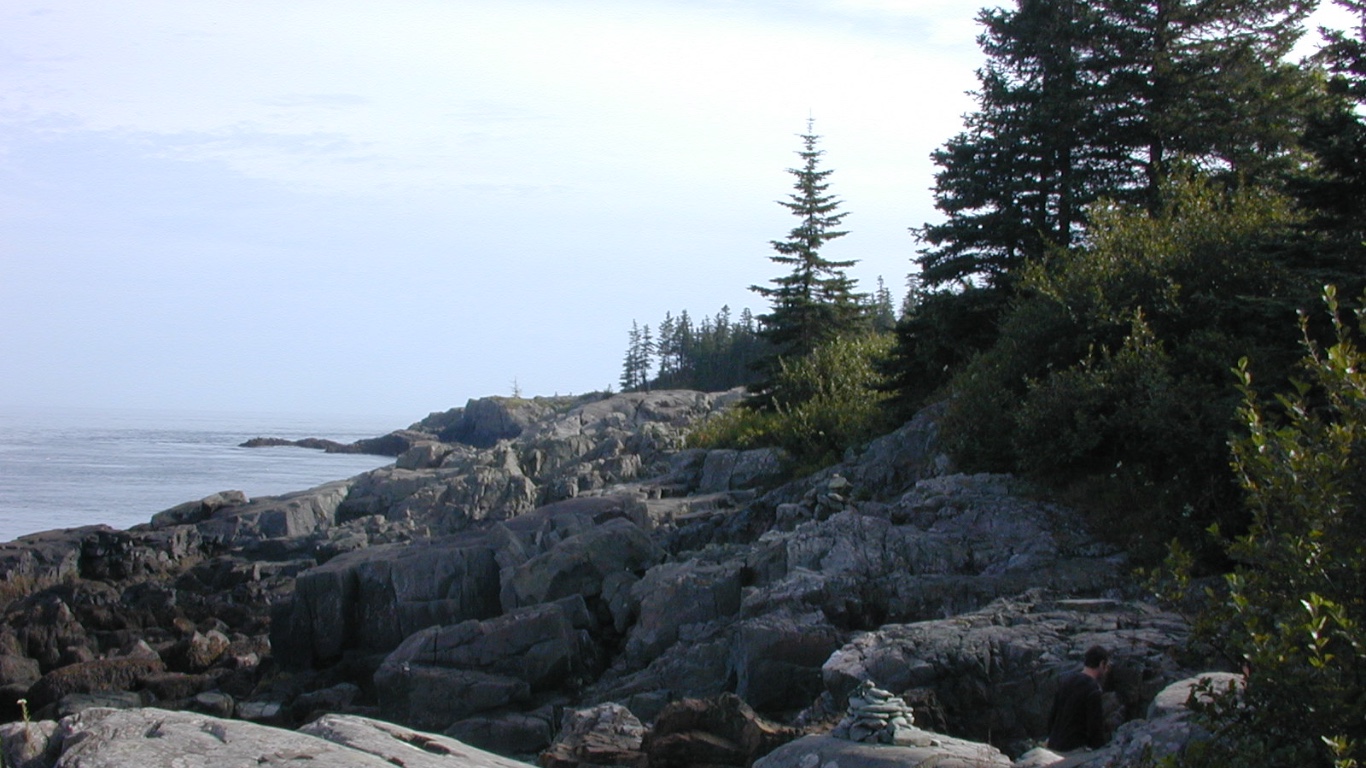
Maine: Cutler Coast
The Cutler Coast Public Reserve lies close to the Canadian border outside of Cutler, Maine. Hiking trails ranging from 2.8 to 9.2 miles round-trip offer access to the sheer cliffs and undeveloped coves often referred to as the Bold Coast.
[in-text-ad-2]

Maryland: Great Falls
Great Falls Park in Maryland offers multiple overlooks of the many rapids and waterfalls on the Potomac River outside of Washington DC. Though there are numerous hiking trails in the park, the Billy Goat Trail offers some of the best closeup views of the falls.

Massachusetts: Gay Head Cliffs
These colorful hundred-foot clay cliffs on the island of Martha’s Vineyard are constantly eroding, which has led to the historic Gay Head Lighthouse being moved to save it from falling into the ocean.
[in-text-ad]

Michigan: Pictured Rocks
While there is no dearth of beauty along Michigan’s Great Lakes coastlines, the Pictured Rocks National Lakeshore offers a little bit of everything beautiful about the coast, including sand dunes, steep cliffs, beaches, forests, and inland lakes.

Minnesota: North Shore of Superior
A 151-mile stretch of highway runs along Minnesota’s north shore of Lake Superior, offering access to numerous state parks, cliff views, waterfalls, forests, and rock formations.

Missouri: Onondaga Cave State Park
Designated a National Natural Landmark due to the quality of its formations, Onondaga Cave features a wide variety of pristine cave structures and an underground river deeply entrenched in a canyon.
[in-text-ad-2]
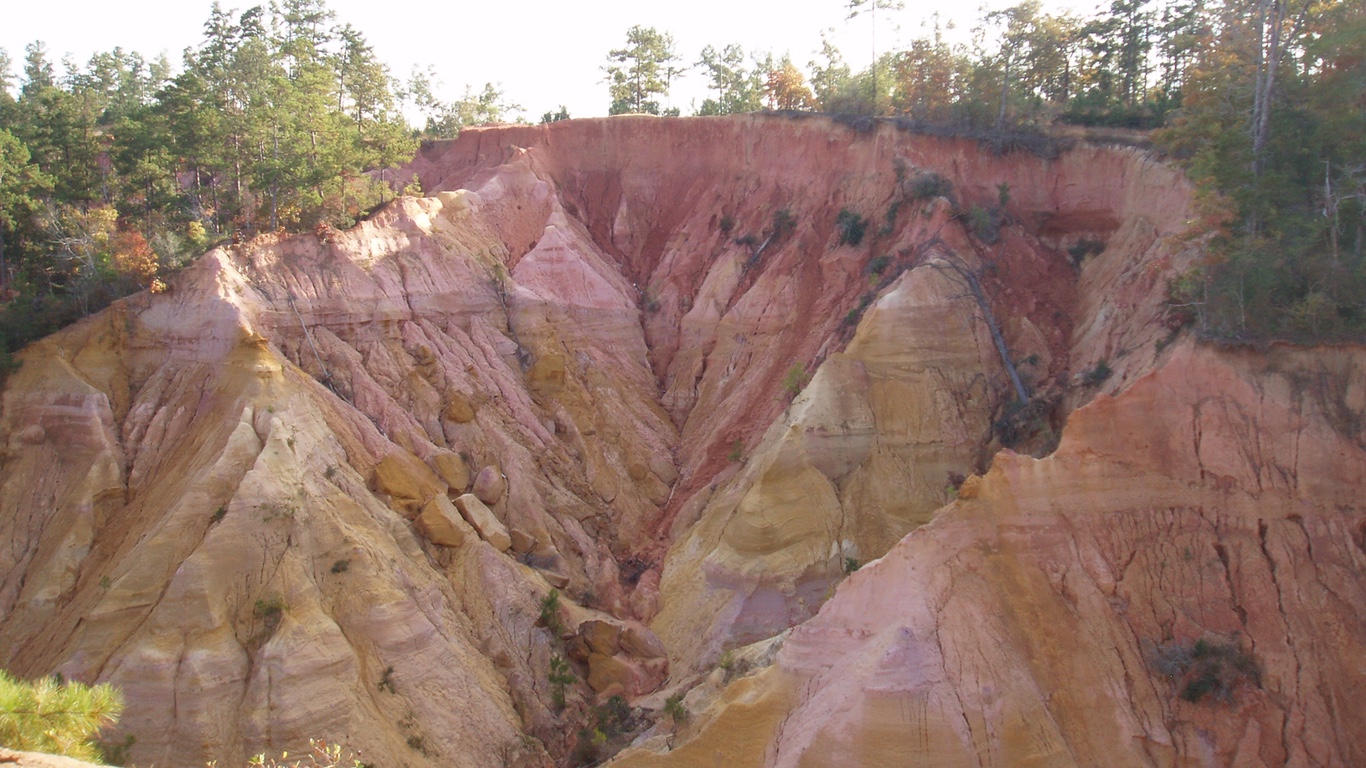
Mississippi: Red Bluff
Red Bluff Canyon outside of Foxworth was formed by the erosion of sand, soil, and red clay by the Pearl River. About 200 feet deep at present, the canyon will continue to get deeper as the river continues to erode its banks.

Montana: Lake McDonald
The largest, longest, and deepest lake in Glacier National Park, Lake McDonald features a spectacular array of colorful stones on its shores and beneath its waters. The rocks were formed in different eras then broken apart by glaciers and deposited in the lake over the years by rivers.
[in-text-ad]
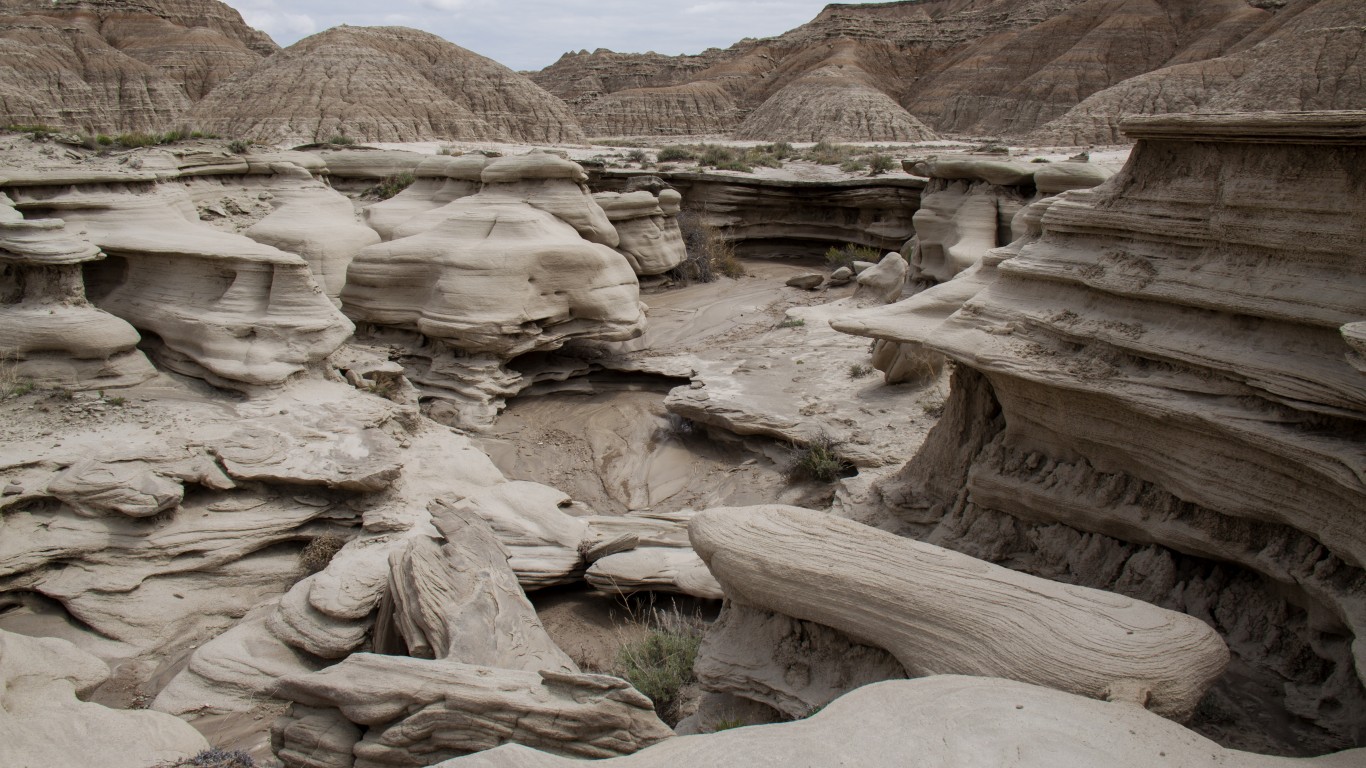
Nebraska: Toadstool Geologic Park
A surprising sight within the plains of Nebraska, Toadstool Geologic Park consists of oddly-shaped clay and sandstone formations within the bed of an ancient river that went dry about 26 million years ago. Fossils of sabre-tooth cats and prehistoric horses are visible among the eroded cliffs.

Nevada: Fly Ranch Geyser
This geyser near Black Rock Desert was created in 1964 when a geothermal energy company drilled a well to the 200-degree underground spring. The formation around the multiple spouts has been growing ever since due to mineral deposits from the water, and is covered in colorful algae.

New Hampshire: Franconia Notch Basin
Located in Franconia Notch State Park, the Basin is a 15-foot-deep, 30-foot-wide bowl carved into granite by a rushing waterfall. Henry David Thoreau called the Basin “perhaps the most remarkable curiosity of its kind in New England.”
[in-text-ad-2]
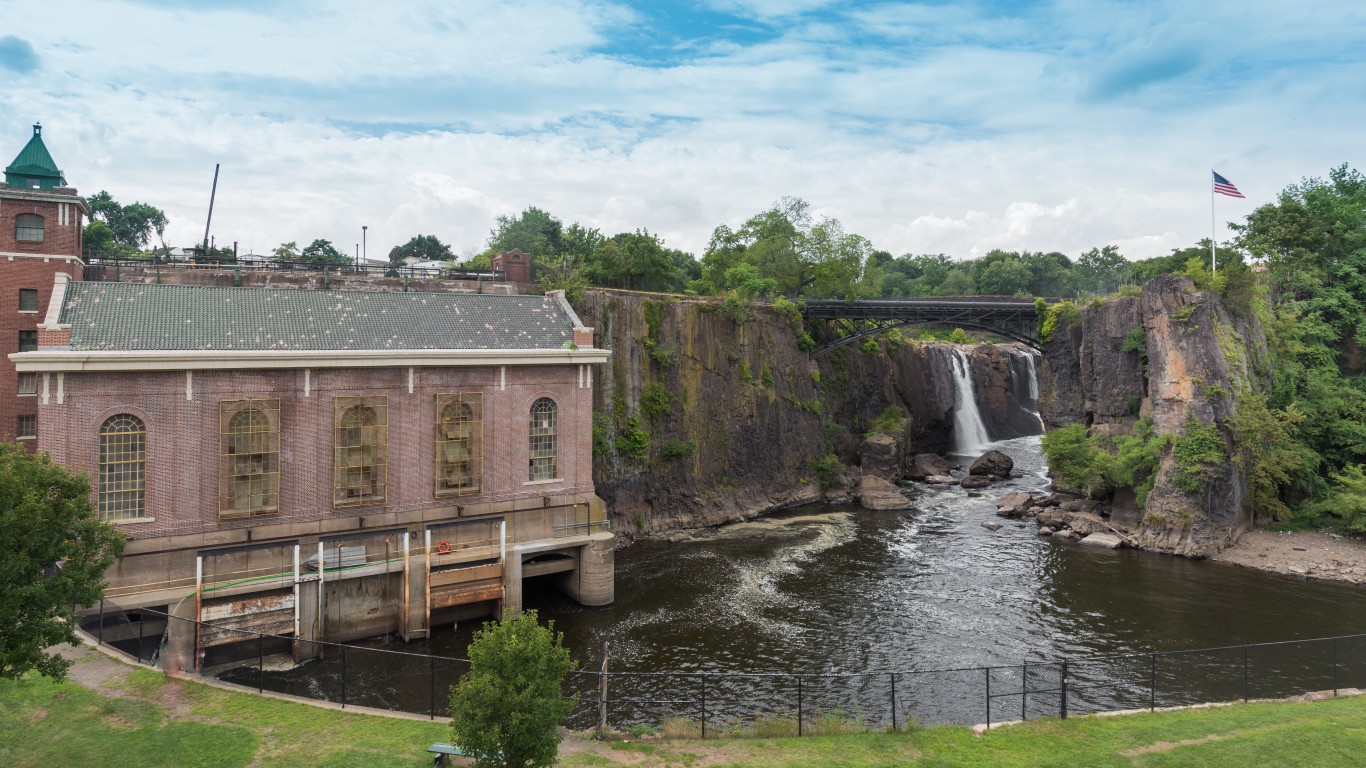
New Jersey: Passaic Falls
Passaic Falls, also known as Paterson Great Falls, are located in the Paterson Great Falls National Historic Park in an urban setting, and are the center of a historic hydro-powered industrial city planned by Alexander Hamilton.
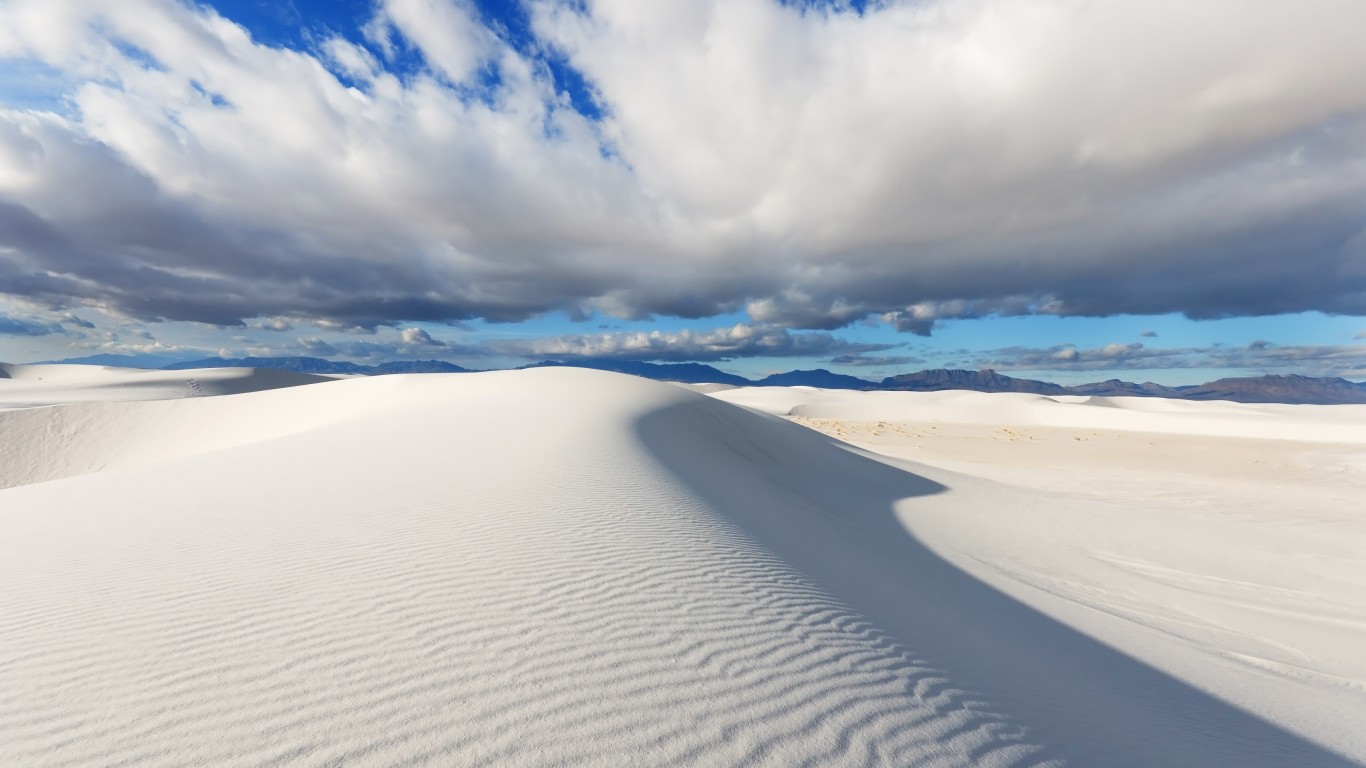
New Mexico: White Sands
White Sands National Monument is the largest gypsum dune field in the world. Gypsum is rarely seen as sand, as it dissolves in water, but New Mexico’s dry climate has preserved the dunes. The pure white sand mounds stretch for 275 square miles near Alamogordo.
[in-text-ad]
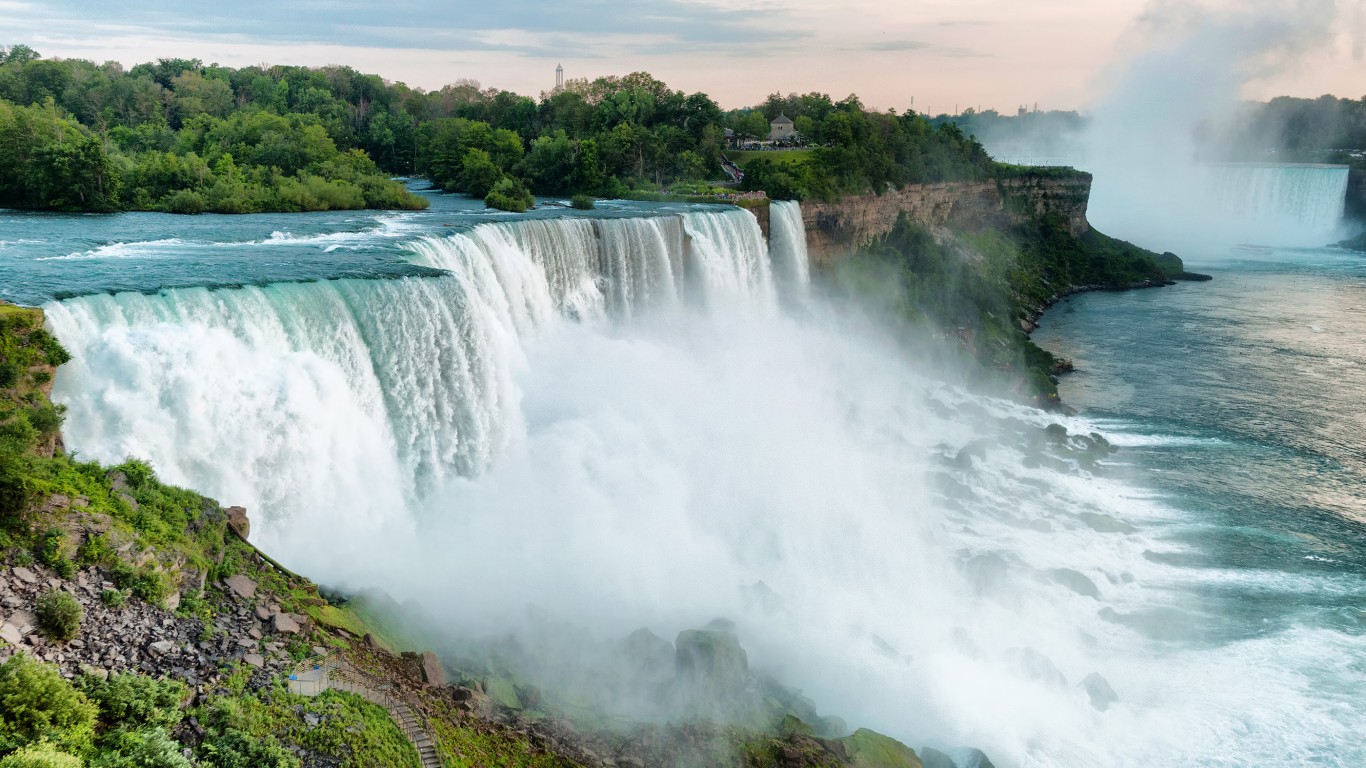
New York: Niagara Falls
Niagara Falls are formed not by a river, but by Lake Erie draining into Lake Ontario. Niagara is an attraction that spans the border into Canada, and is made of three falls: Horseshoe, Bridal Veil, and American Falls. On the U.S. side, Niagara Falls State Park is the nation’s oldest state park.

North Carolina: Linville Falls
Linville Falls is a three-tiered waterfall that plummets 90 feet into the 12-mile-long Linville Gorge off the Blue Ridge Parkway. Multiple trails between one and two miles round trip provide overlooks to the falls.

North Dakota: Painted Canyon
Located in the South Unit of Theodore Roosevelt National Park, Painted Canyon is one of the most photographed areas in North Dakota. Painted Canyon Overlook affords views of the Canyon, and a one-mile walking trail dips down below the rim to offer views of the unique strata.
[in-text-ad-2]
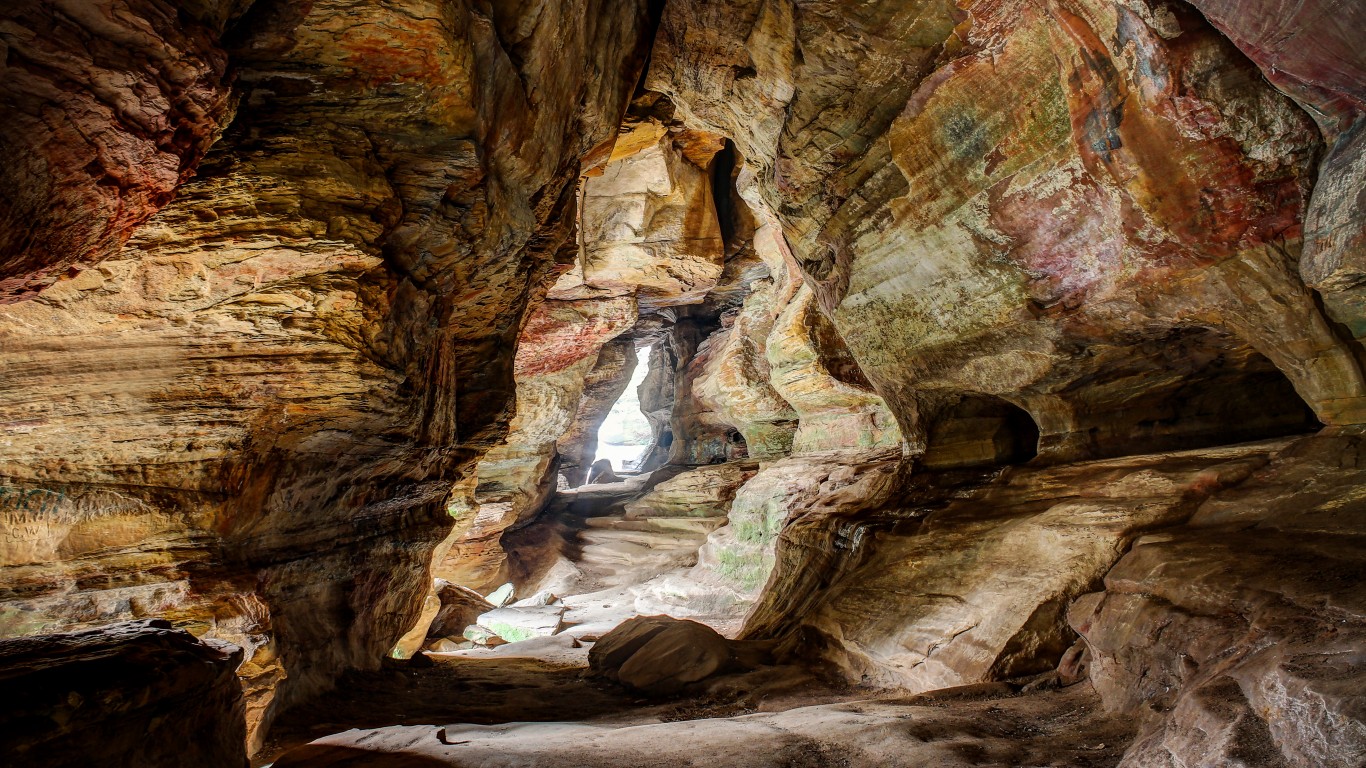
Ohio: Hocking Hills Rock House
A tunnel-like cave situated high up on a 150-foot cliff, the Rock House at Hocking Hills State Park is a 200-foot-long, 25-foot-high tunnel caused by water erosion. Seven window-like holes and massive sandstone columns helped give the cave its name.
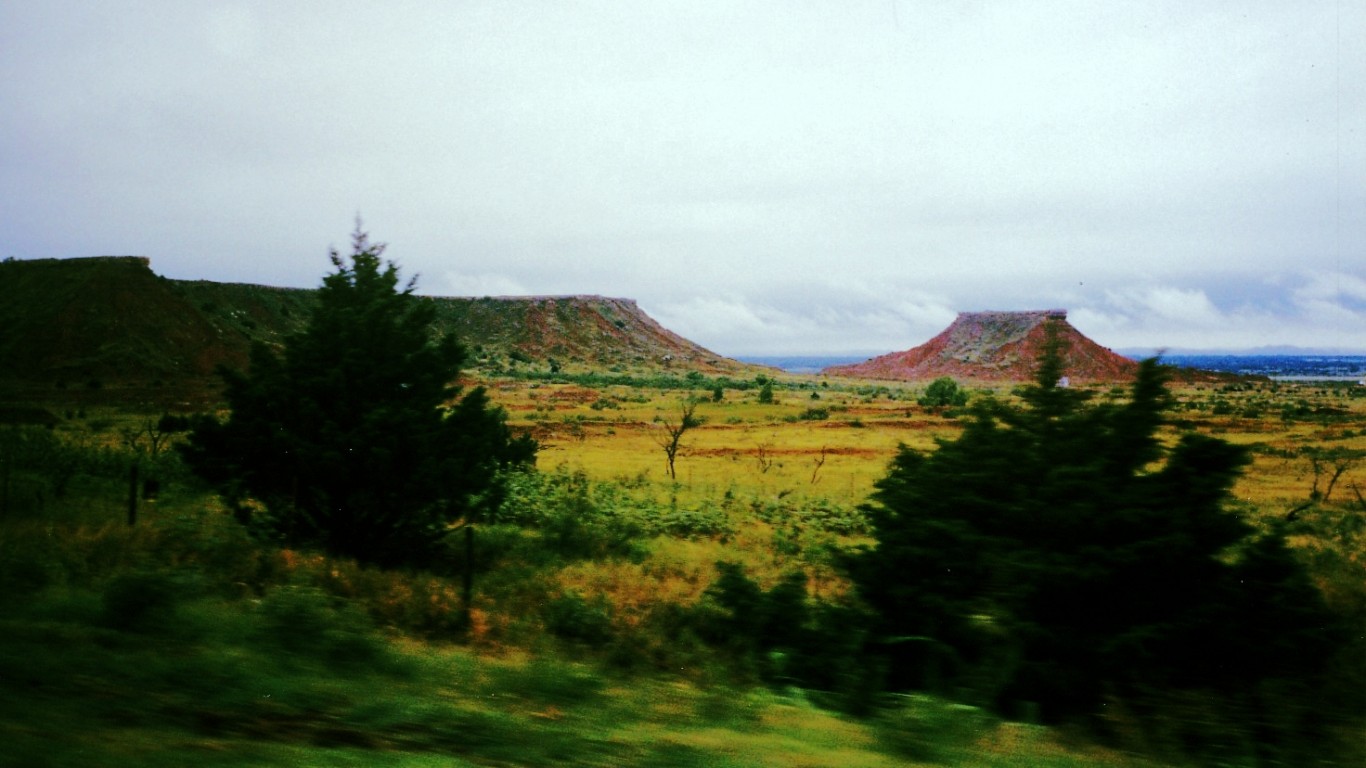
Oklahoma: Gloss Mountains
The Gloss Mountains are also called the Glass Mountains, due to their reflective selenite content that mimics glass, especially when the sun hits at just the right angle. Not actually mountains, they are a series of deep red buttes and mesas that rise 150 to 200 feet.
[in-text-ad]
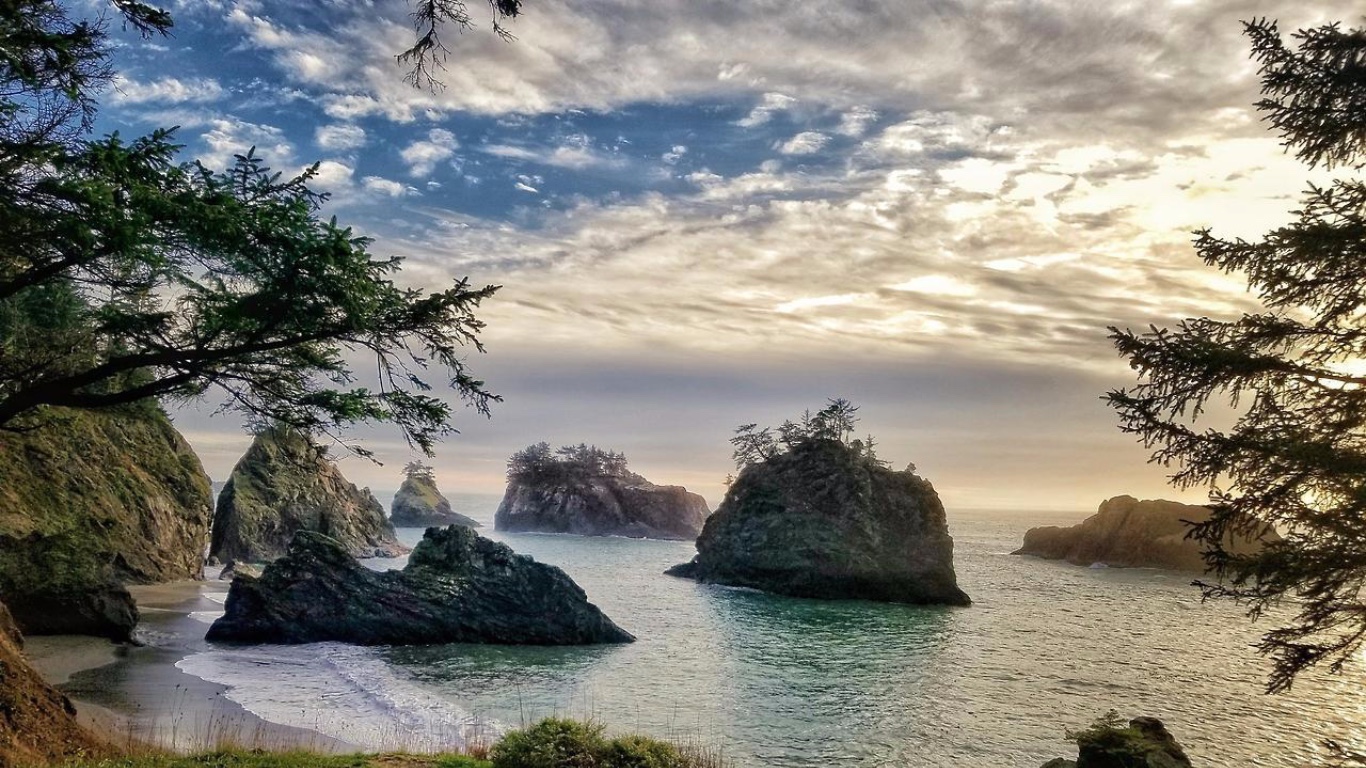
Oregon: Secret Beach
Located on the Samuel H. Boardman State Scenic Corridor, Secret Beach is a stretch of undeveloped coastline that features stone formations, sea caves, and a waterfall. A one-mile hike leads to the beach, where visitors can whale watch, explore caves, and swim in the cove.

Pennsylvania: Cherry Springs State Park
Surrounded by the 262,000-acre Susquehannock State Forest, Cherry Springs State Park is a remote location that is perfect for stargazing. Because the park has some of the darkest skies in the Eastern half of the country, it offers uniquely clear views of the Milky Way and other astronomical phenomena.

Rhode Island: Mohegan Bluffs
The Mohegan Bluffs on Block Island are a series of 200-foot-high coastal cliffs that span over two miles. A beach at the base of the bluffs is accessible by a steep trail from the top, and the overlooks offers views reaching as far as Montauk on Long Island.
[in-text-ad-2]
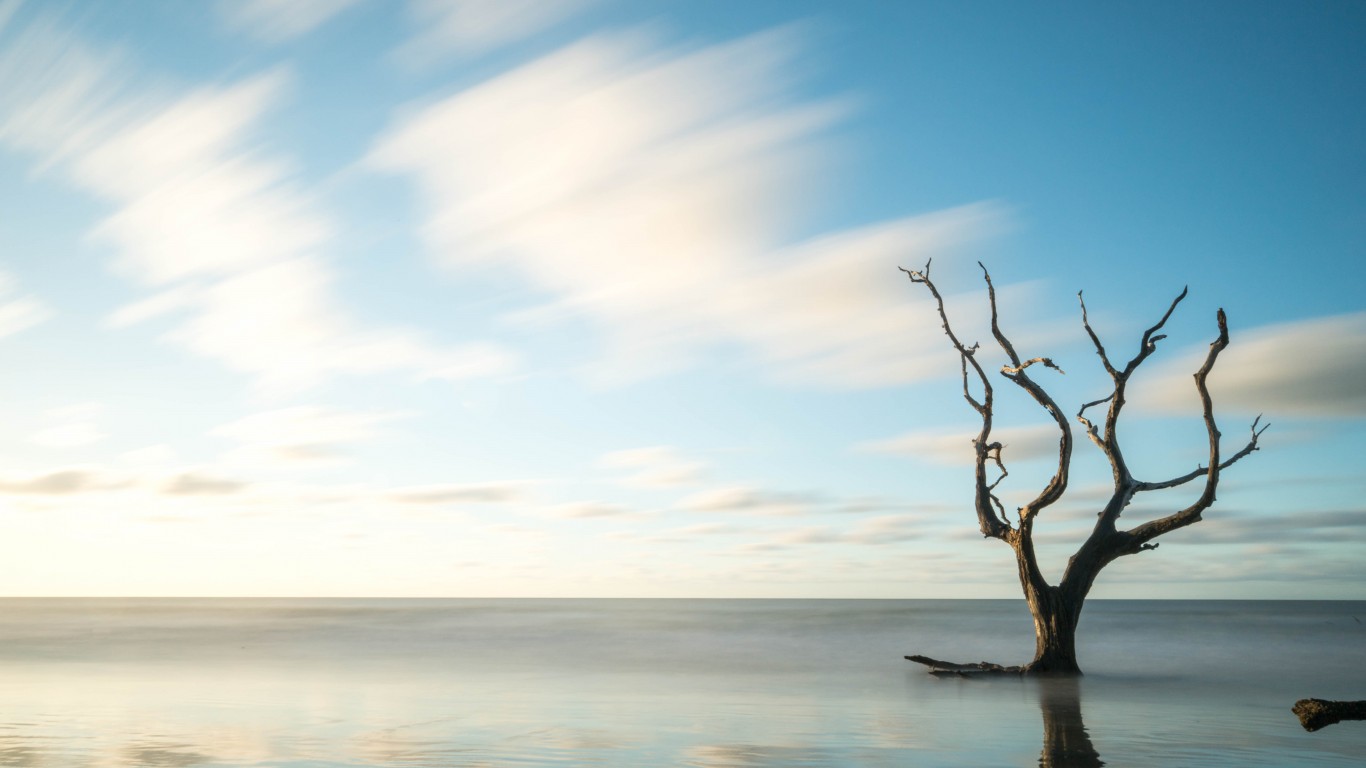
South Carolina: Boneyard Beach
Boneyard Beach is an eerie stretch of coast on Bull Island where trees that formerly grew on the shore have been overtaken by the ocean. The saltwater eventually turned them white and grey, and many have toppled over and lie in the waves.

South Dakota: Badlands
Aside from being a diverse display of geologic deposits, the Badlands are also one of the most prolific fossil beds on earth. A 40-mile scenic byway through Badlands National Park brings visitors up close to the colorful strata of the rock formations.
[in-text-ad]
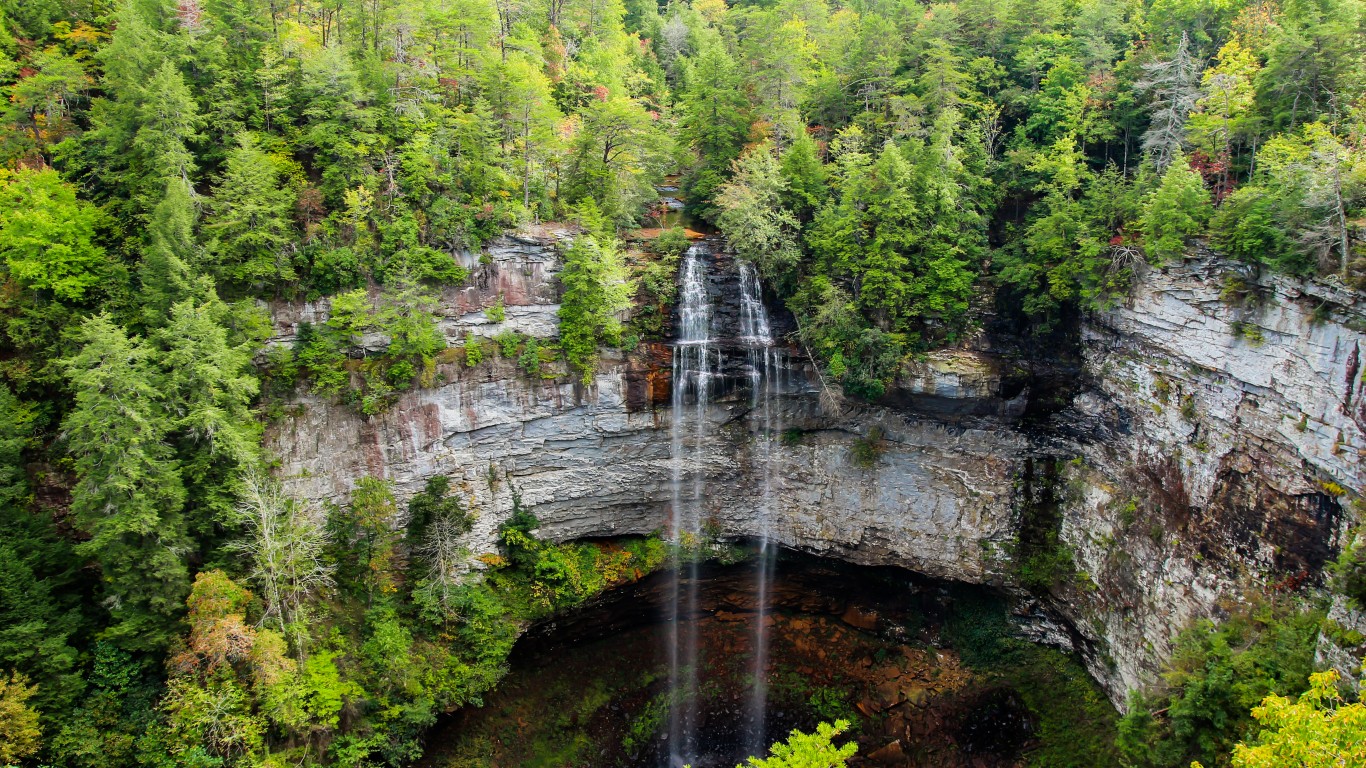
Tennessee: Fall Creek Falls
One of the tallest single-drop waterfalls east of the Mississippi River, Fall Creek Falls is 256 feet high. A short walk from the parking lot leads to an overlook of the falls, and a steep trail leads to the base of the falls.
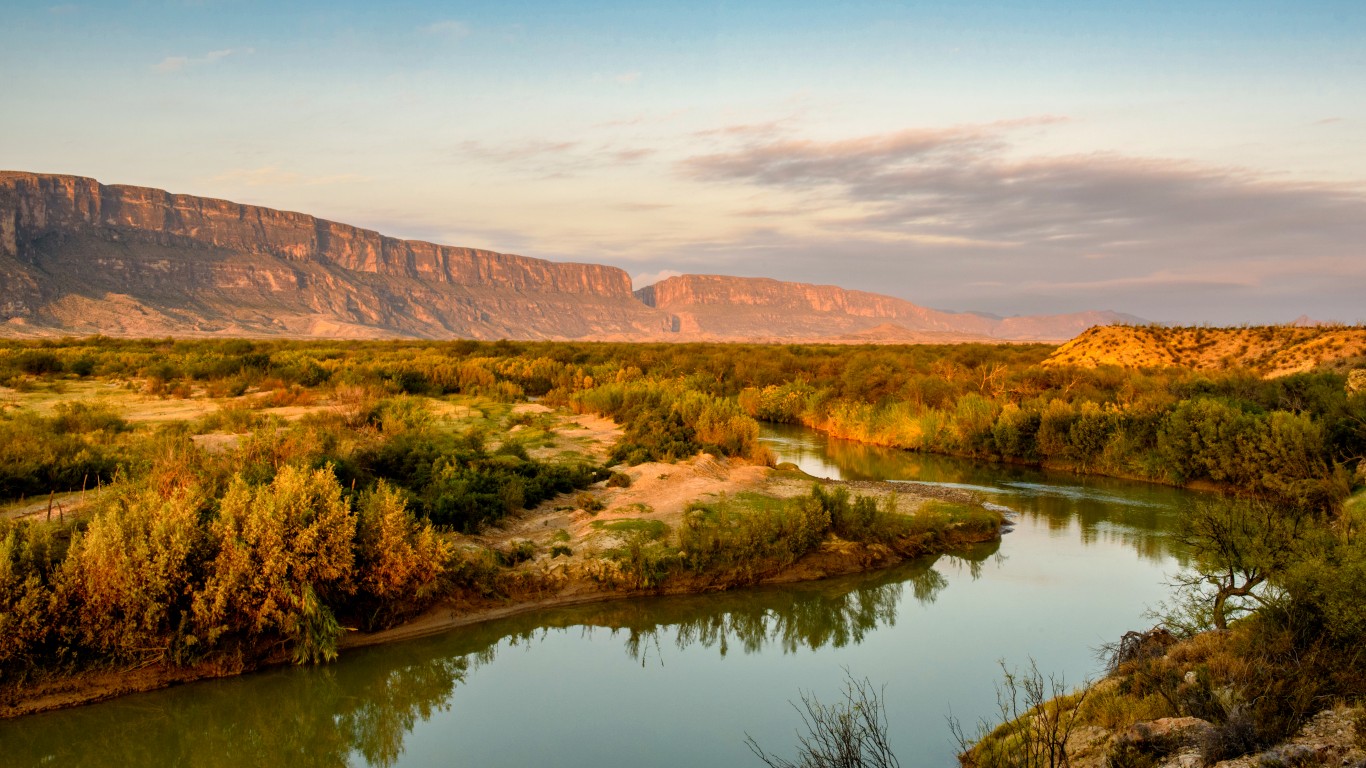
Texas: Big Bend National Park
Big Bend National Park abuts the Rio Grande River along the Mexican border. It contains the Chisos mountains and miles of limestone canyons carved into the desert by the river.
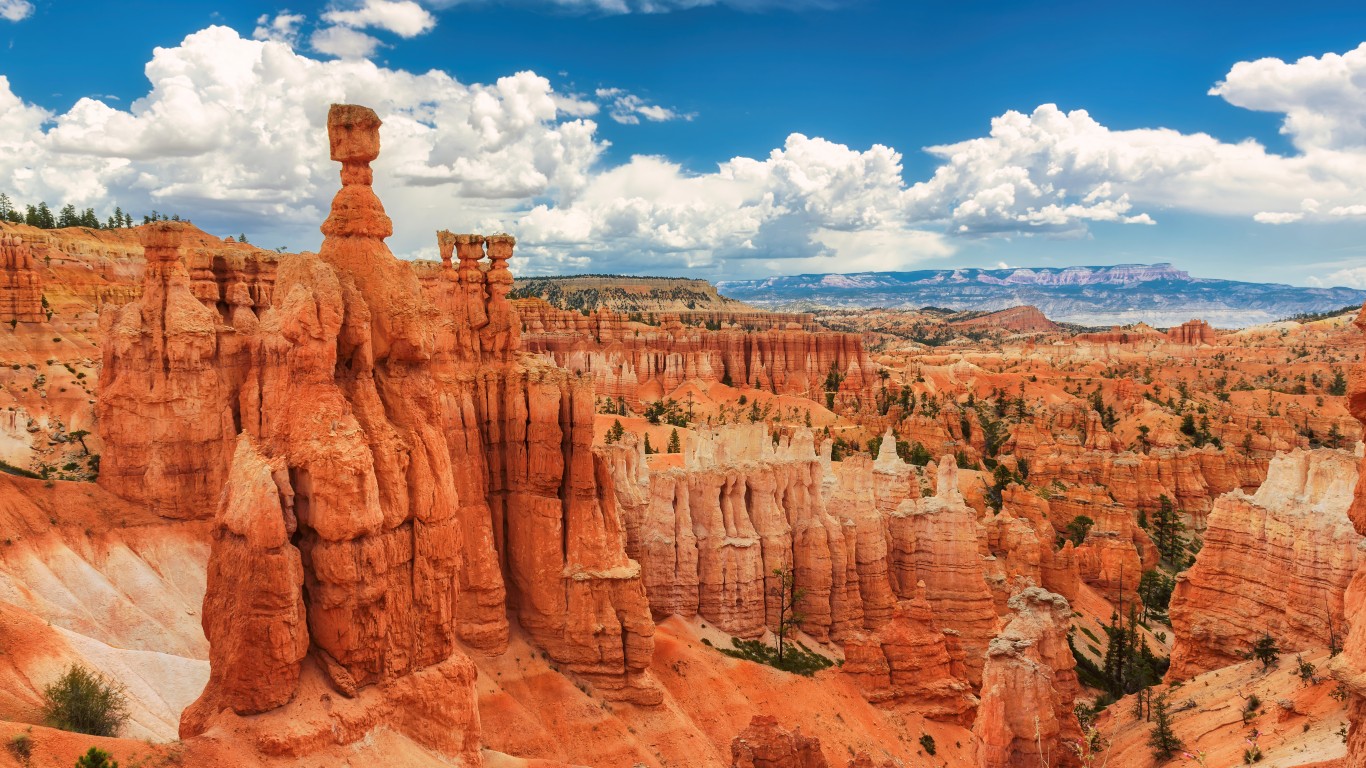
Utah: Bryce Canyon
Eroded by wind and water over millions of years, the thousand-foot limestone and sandstone columns at Bryce Canyon are striped with orange, pink, red, and white layers. Rather than being an actual canyon, the odd-shaped spires are a geologic formation called a hoodoo.
[in-text-ad-2]

Vermont: Huntington Gorge
A dangerous chasm that has claimed dozens of lives, the Huntington Gorge is a series of cascades and waterfalls in a narrow rock slot in Richmond. While swimming in the gorge is not recommended, areas further downriver offer safe trails to the water’s edge and countless swimming holes.

Virginia: Luray Caverns
Spanning 64 acres near Shenandoah National Park, Luray Caverns are limestone caves formed by underground rivers and acidic groundwater. The chambers, which range from 30 to 140 feet high, boast an impressive collection of multicolored stalactites, stalagmites, and columns, as well as two lakes.
[in-text-ad]
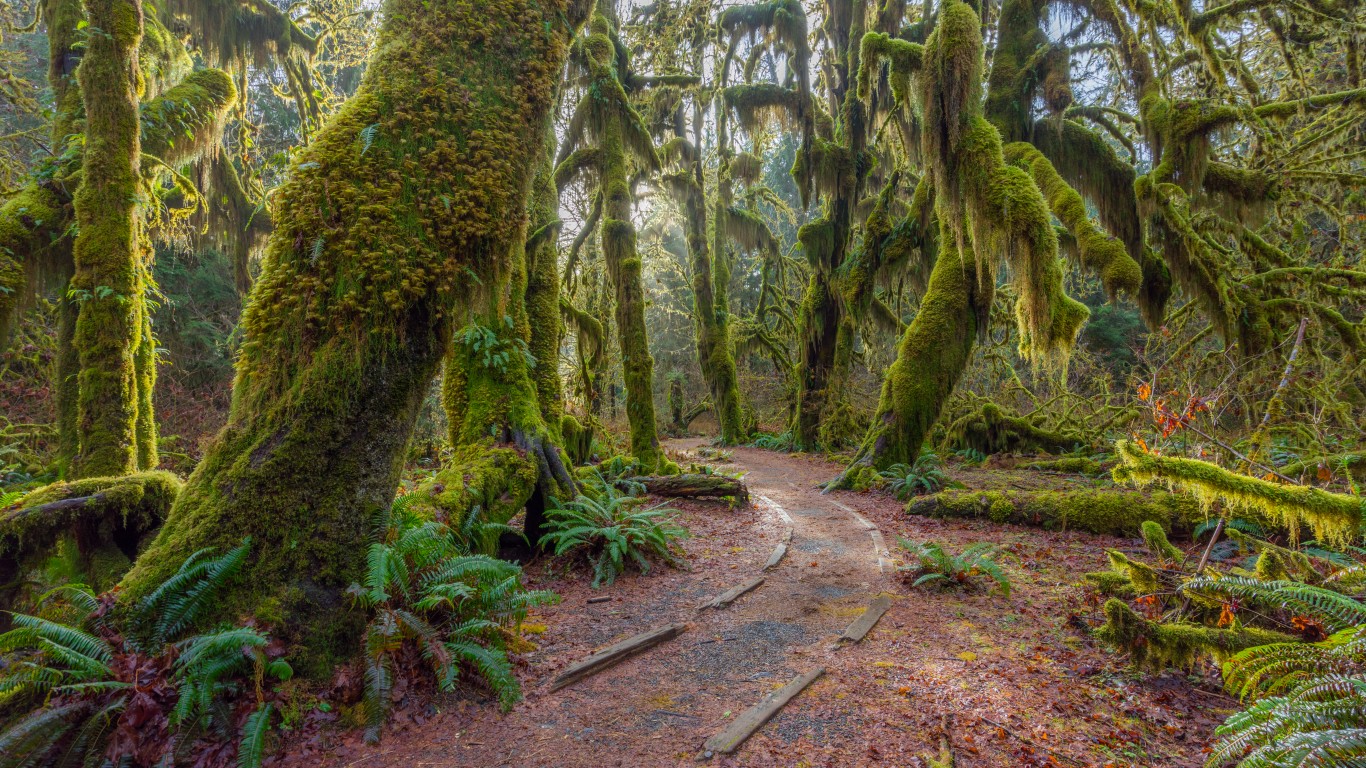
Washington: Hoh Rainforest
This temperate rainforest in Olympic National Park receives an average of 12 feet of rain a year, and is one of the oldest living ecosystems on the planet. Multiple hiking trails bring visitors through the moss- and fern-covered trees, which are largely sitka spruce and western hemlock.
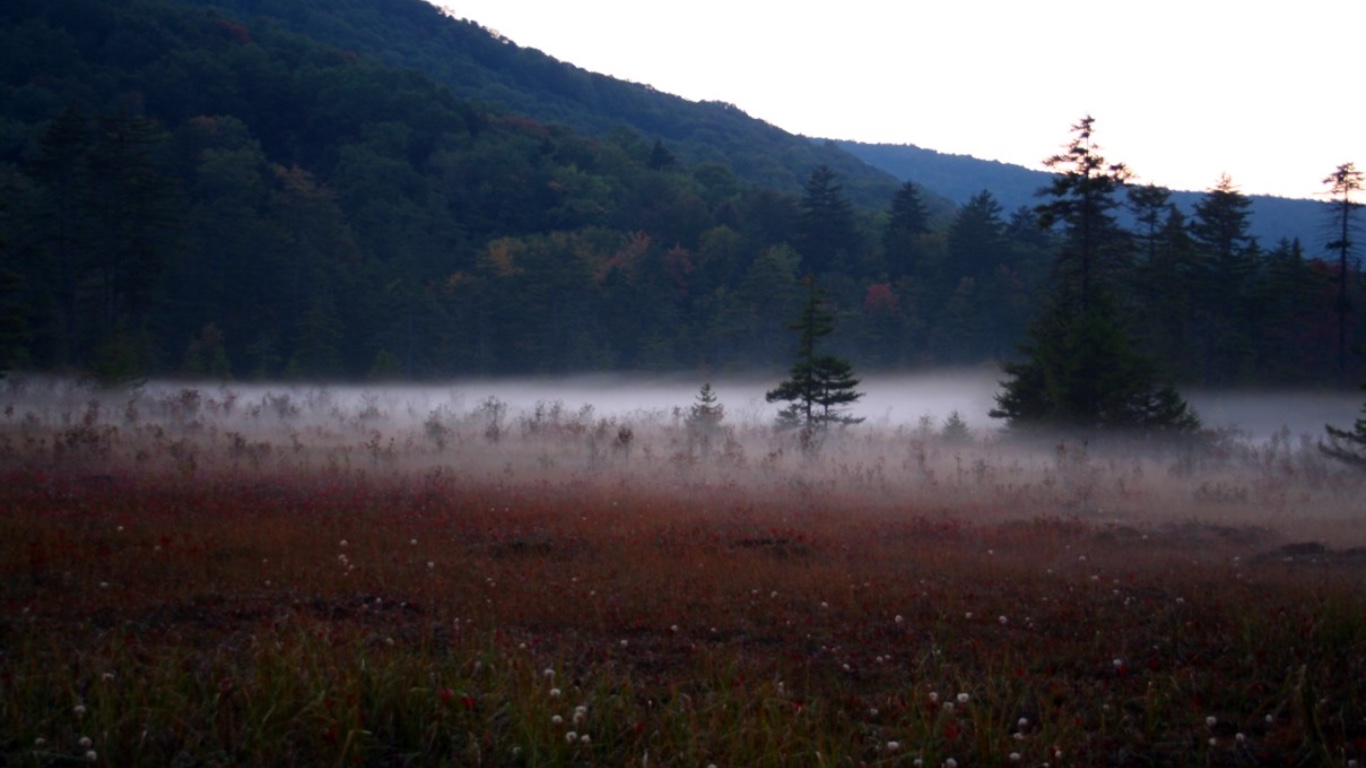
West Virginia: Cranberry Glades
The acidic soil of these boreal bogs in the Allegheny Mountains is home to many plants that usually live at higher altitudes, including carnivorous pitcher plants, cranberries, skunk cabbage, and sphagnum moss.
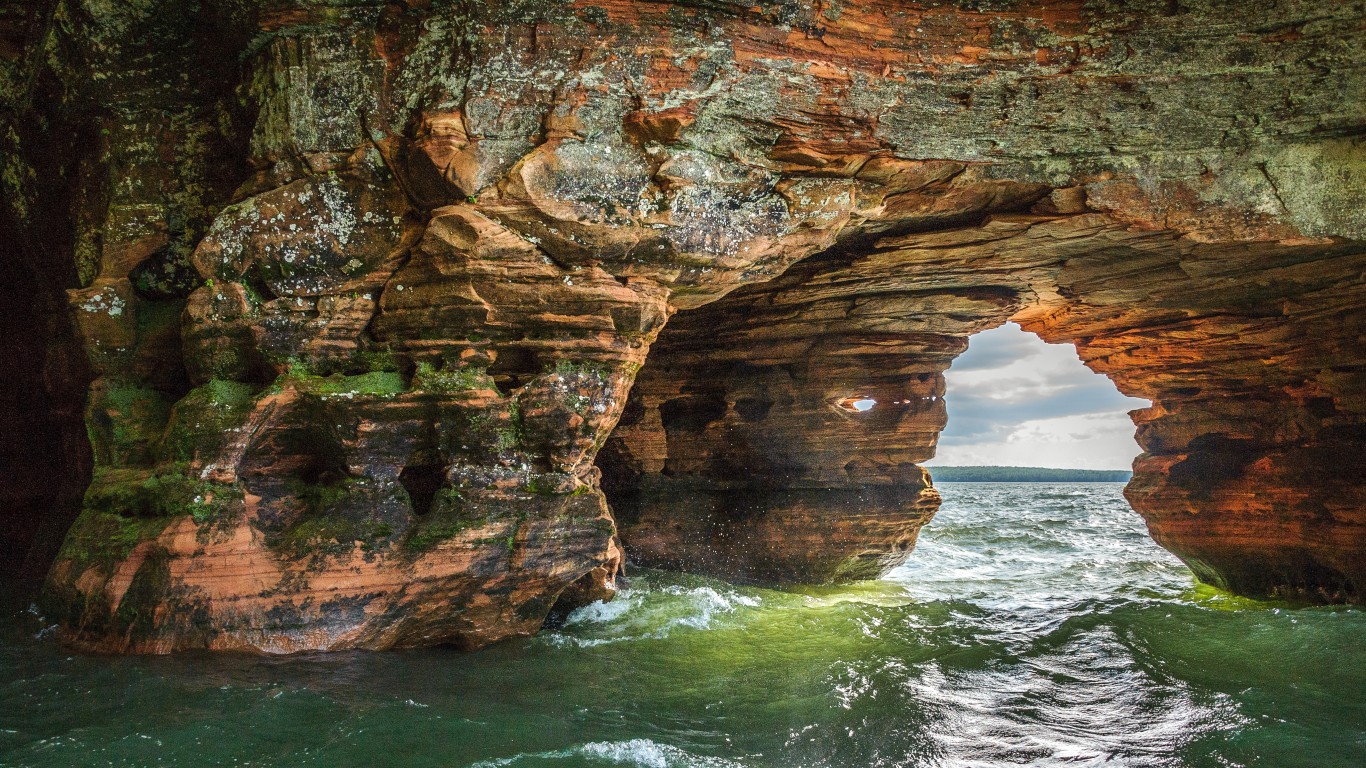
Wisconsin: Apostle Islands
A group of about 20 islands in Lake Superior, the Apostle Islands are covered in pits and caverns, old growth forest, and waterfalls. They are accessible by boat during the warmer months, but if the lake freezes deep enough to provide safe passage in the winter, visitors can walk to some of the islands, which are covered in beautiful ice formations.
[in-text-ad-2]

Wyoming: Grand Prismatic Spring
The Grand Prismatic Spring is the largest hot spring in Yellowstone. Its color rings are due to bacteria that inhabit different temperature zones in the water, which is scalding in the center and cooler at the edges of the pool.
Want retirement to come a few years earlier than you’d planned? Or are you ready to retire now, but want an extra set of eyes on your finances?
Now you can speak with up to 3 financial experts in your area for FREE. By simply clicking here you can begin to match with financial professionals who can help you build your plan to retire early. And the best part? The first conversation with them is free.
Click here to match with up to 3 financial pros who would be excited to help you make financial decisions.
Have questions about retirement or personal finance? Email us at [email protected]!
By emailing your questions to 24/7 Wall St., you agree to have them published anonymously on a673b.bigscoots-temp.com.
By submitting your story, you understand and agree that we may use your story, or versions of it, in all media and platforms, including via third parties.
Thank you for reading! Have some feedback for us?
Contact the 24/7 Wall St. editorial team.